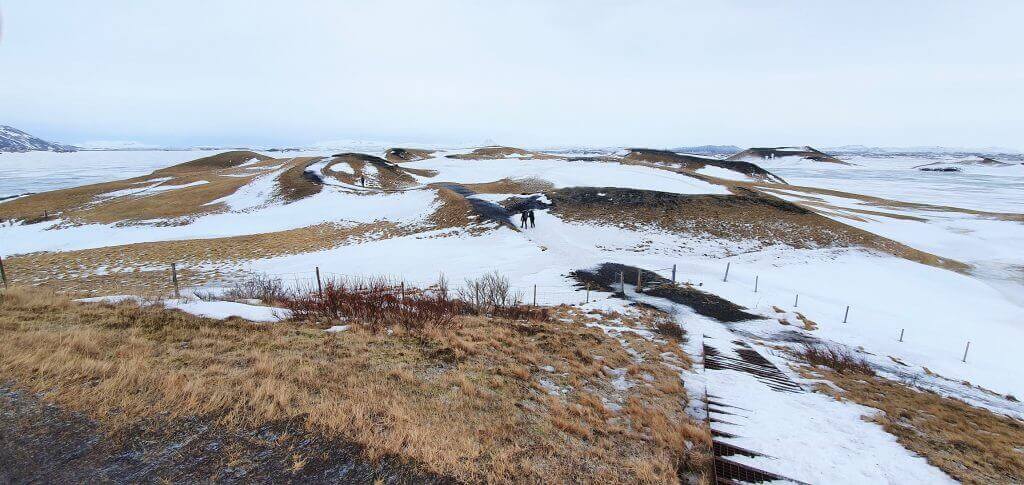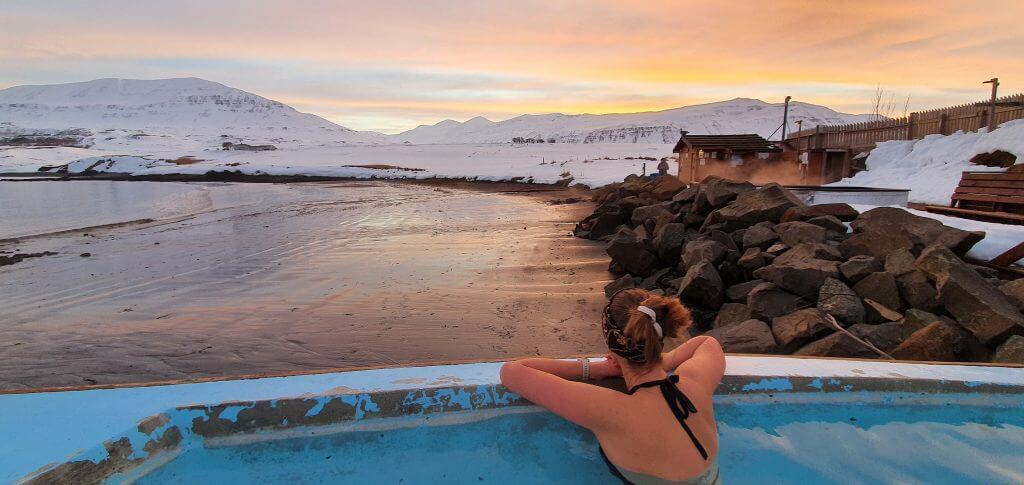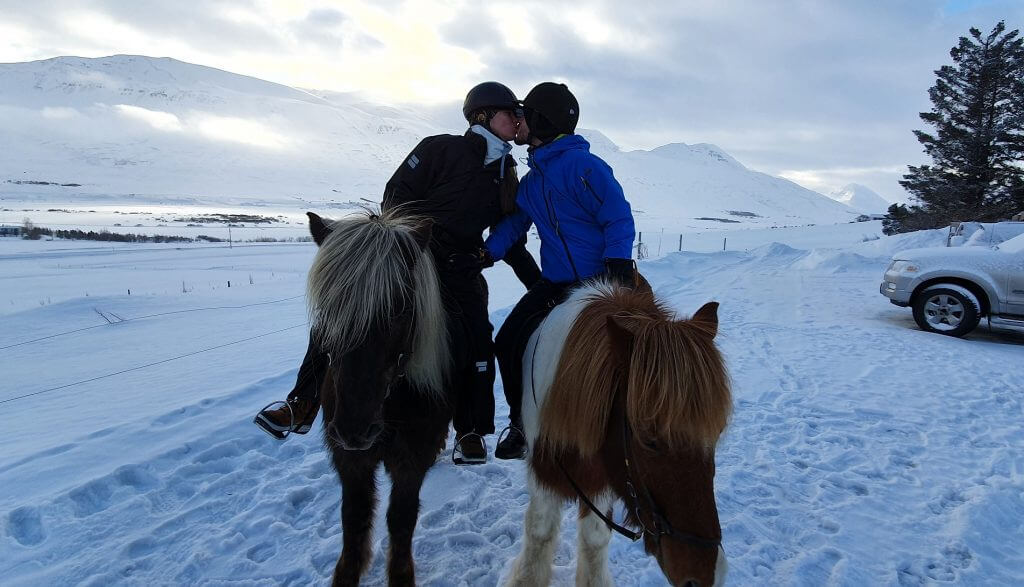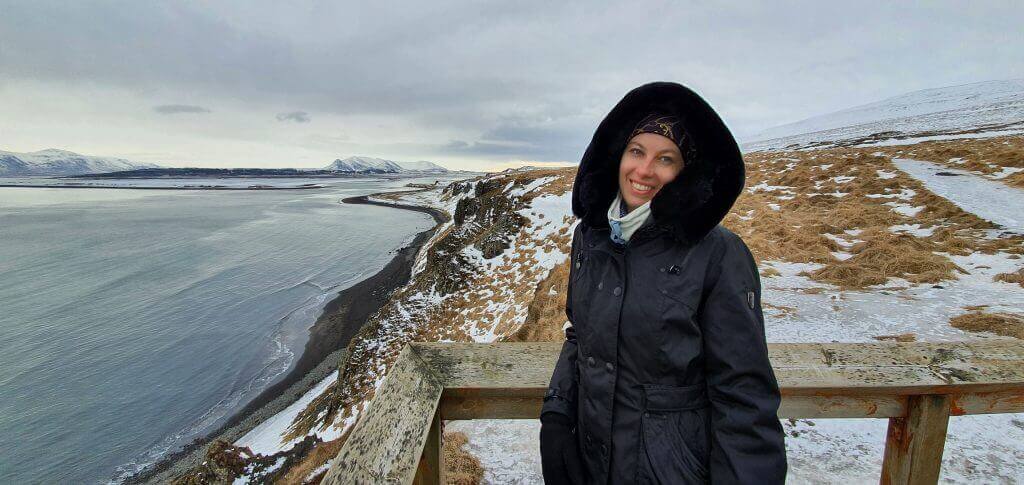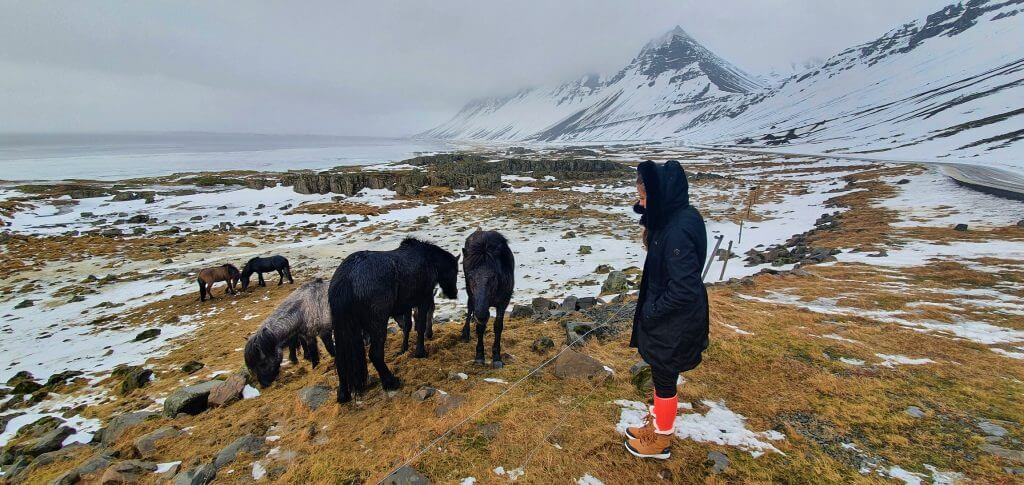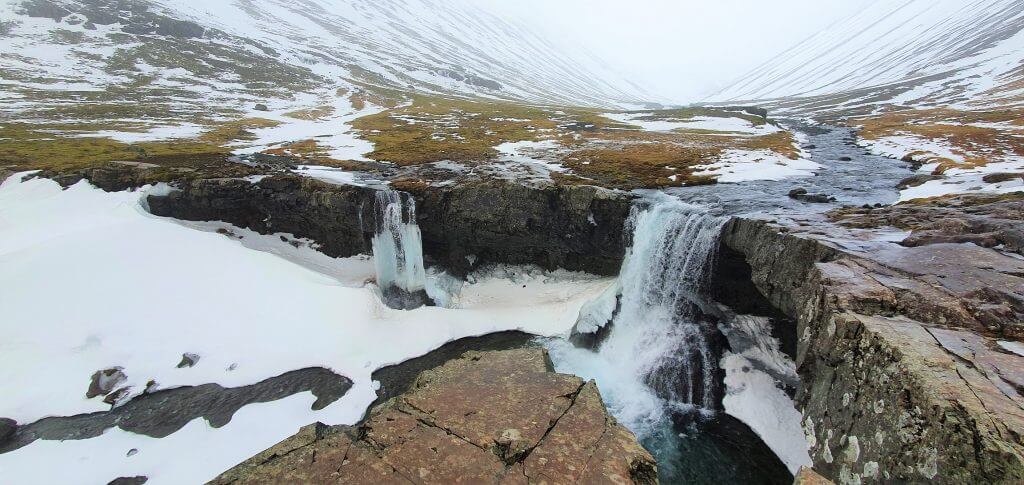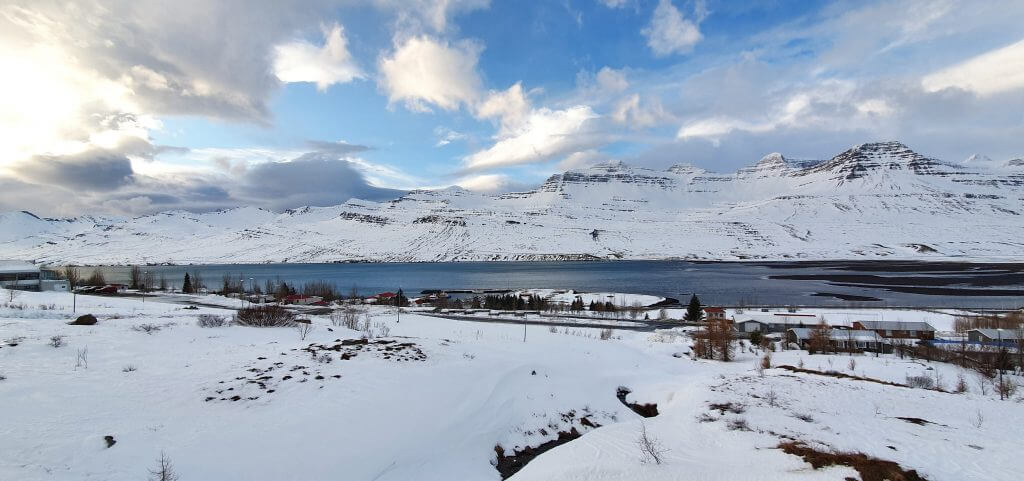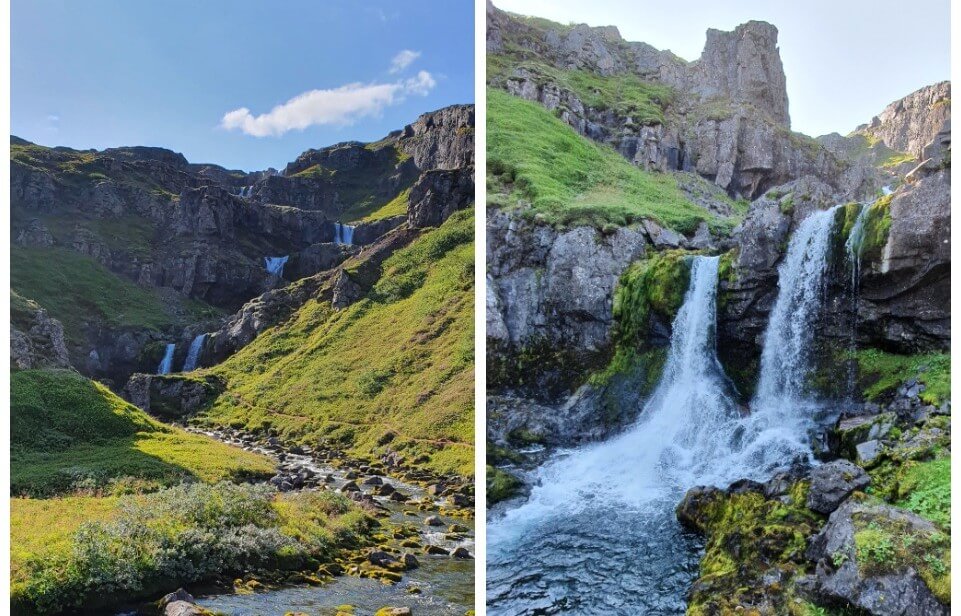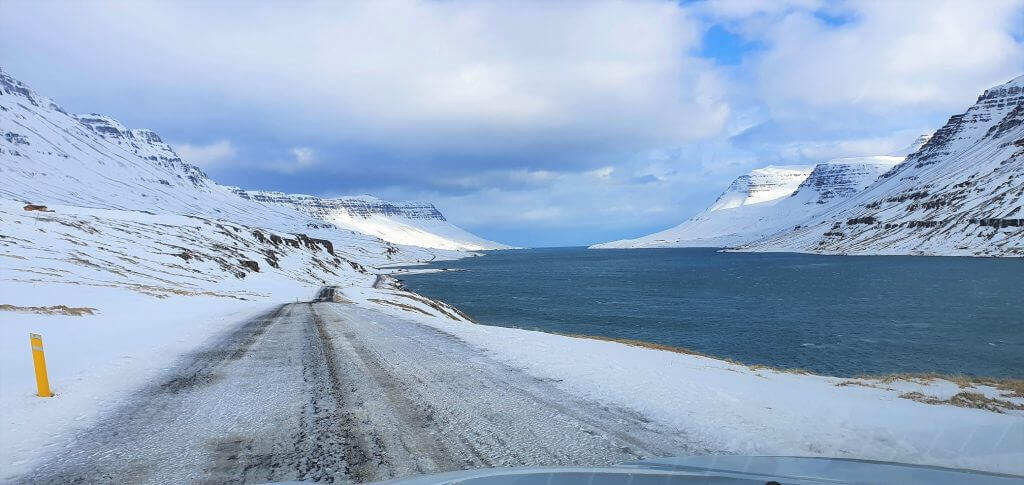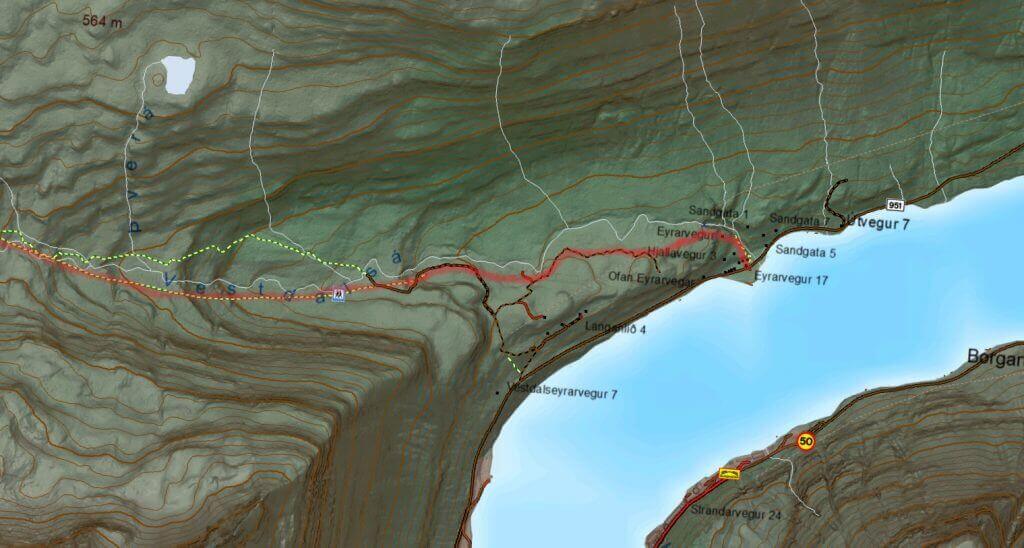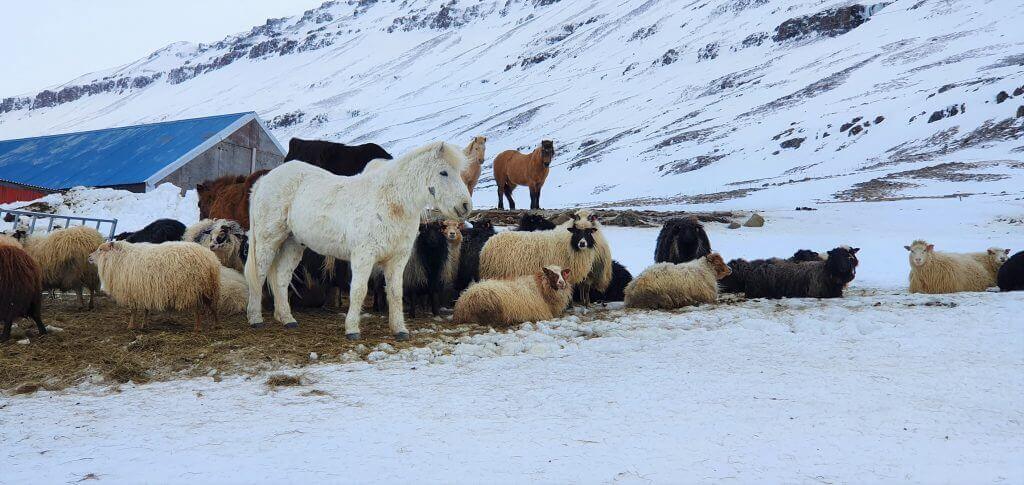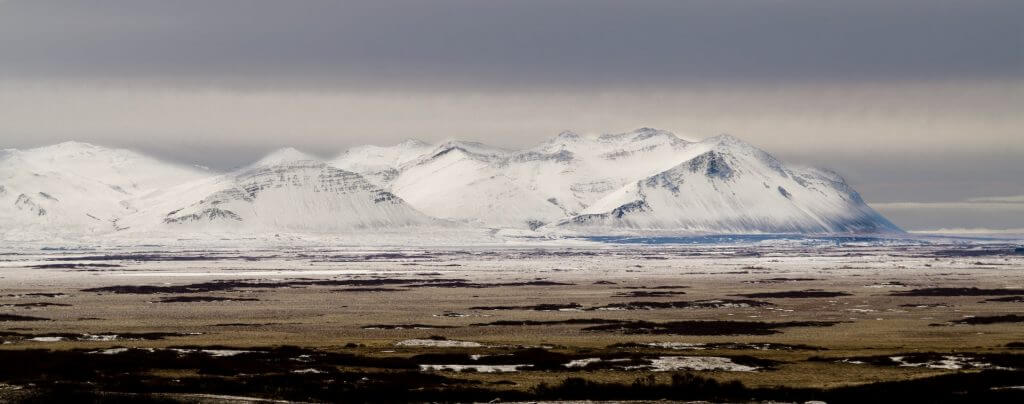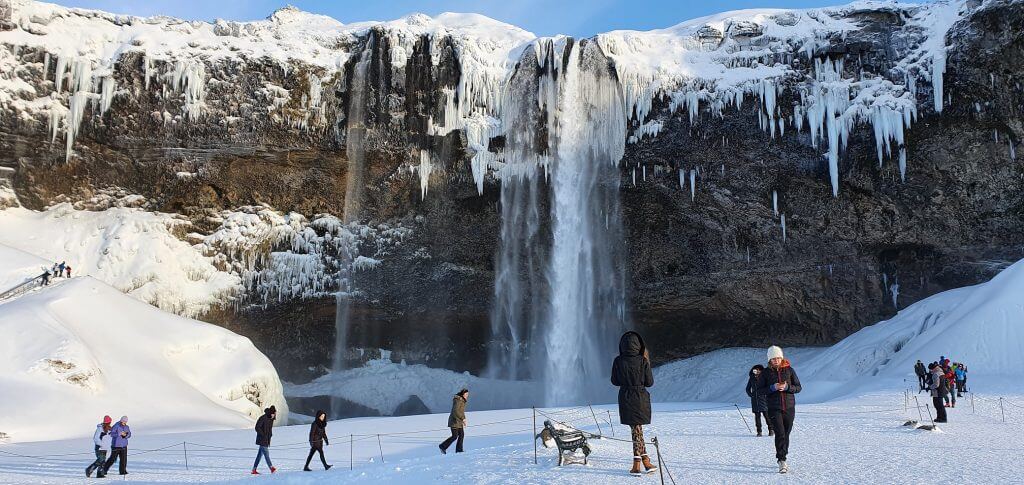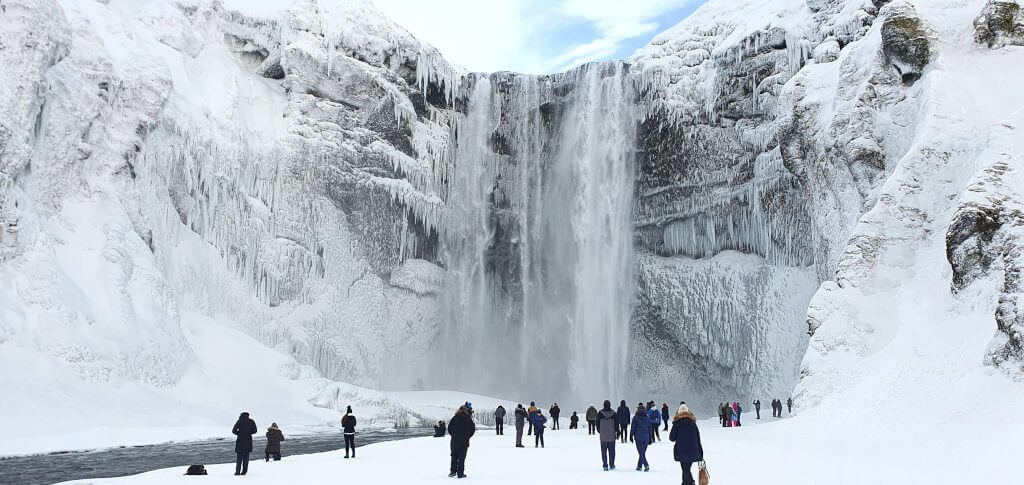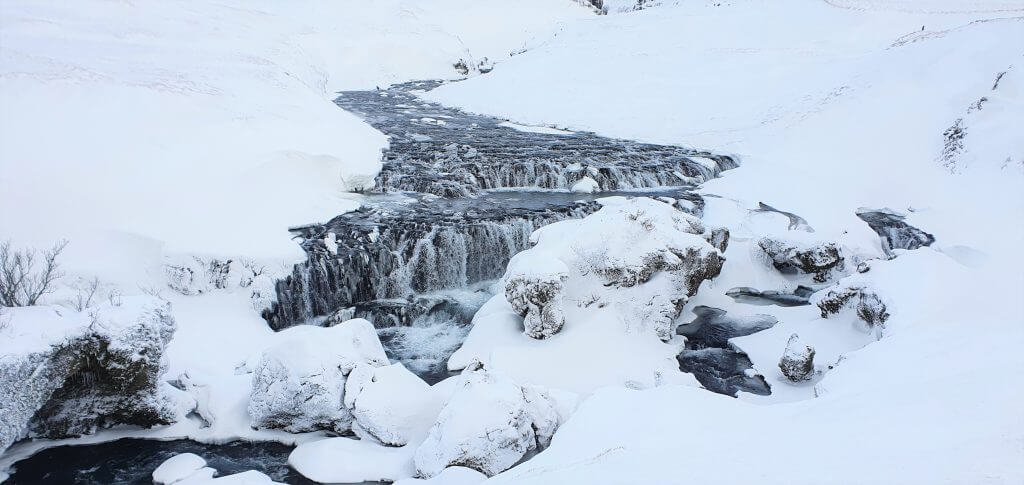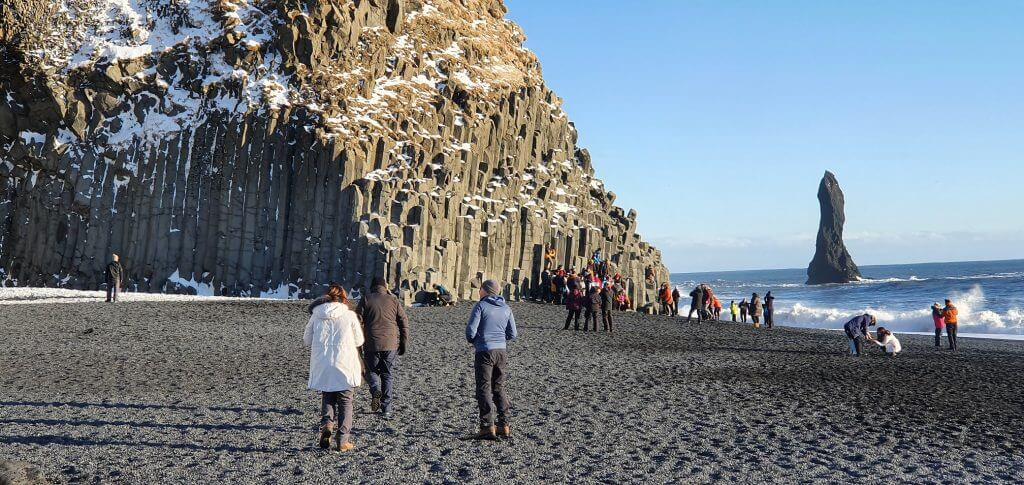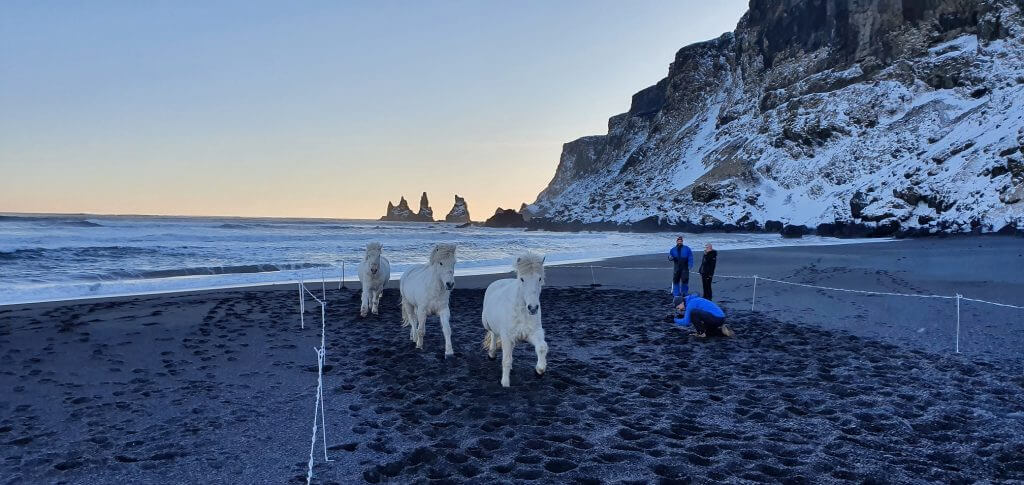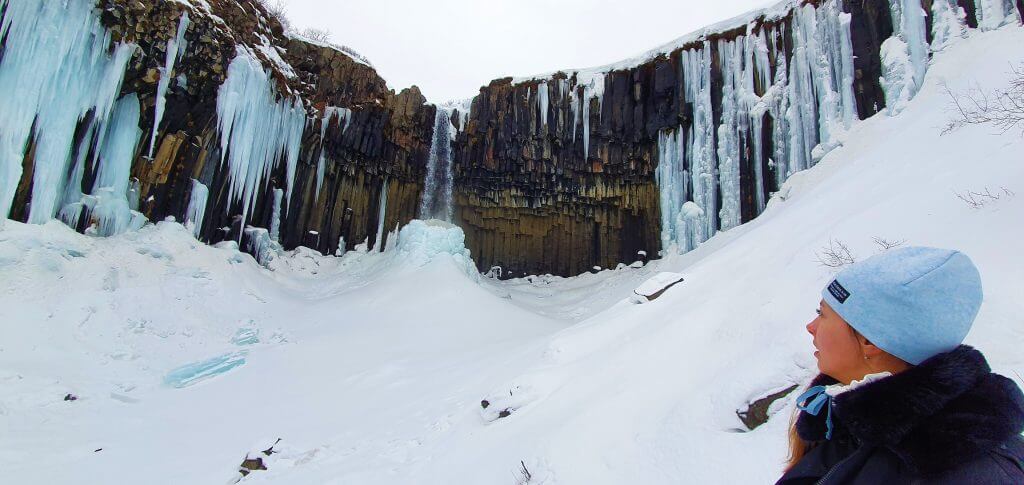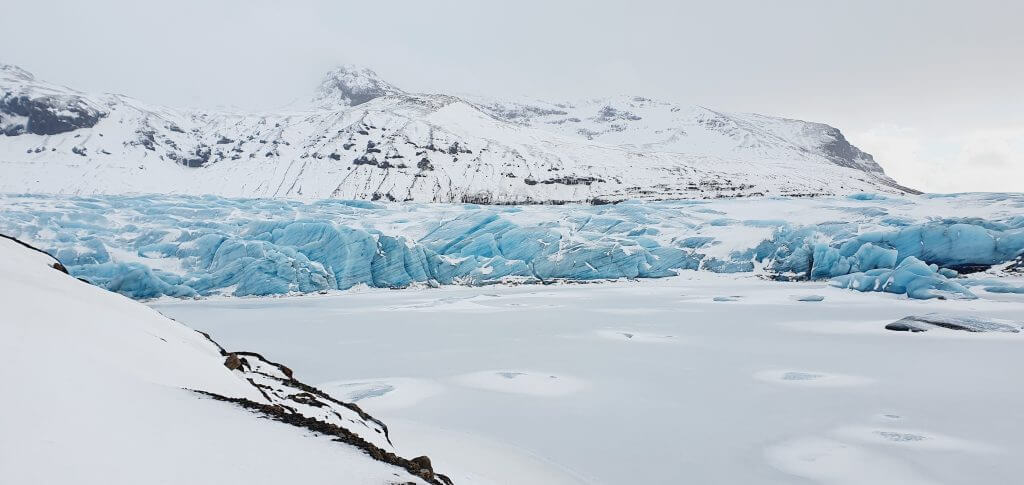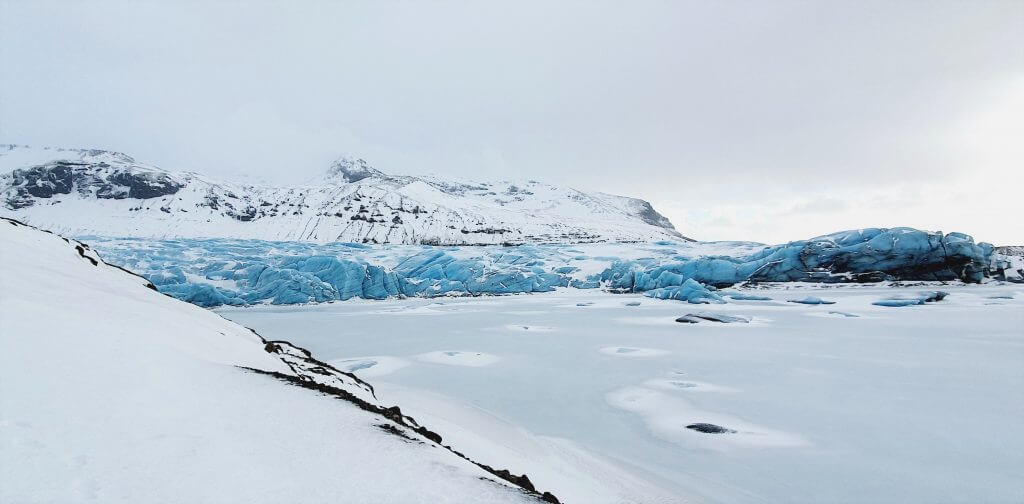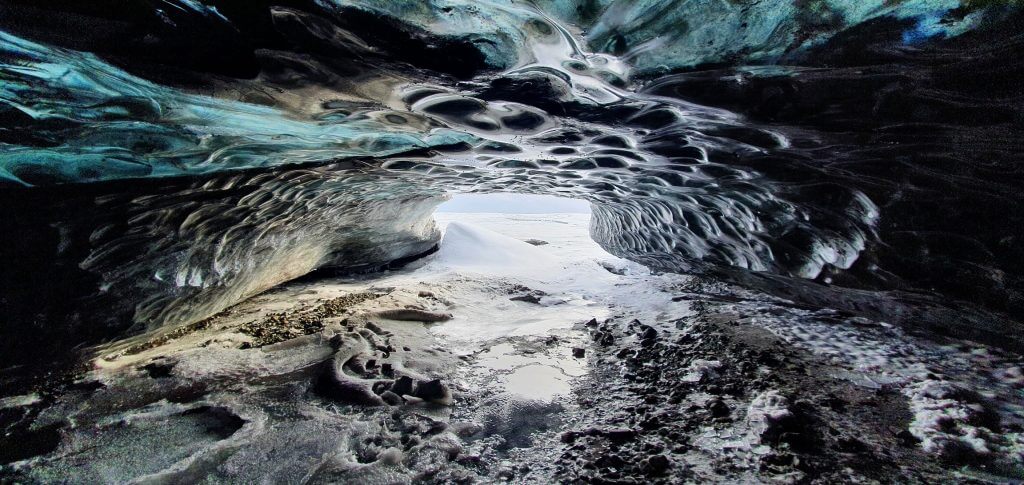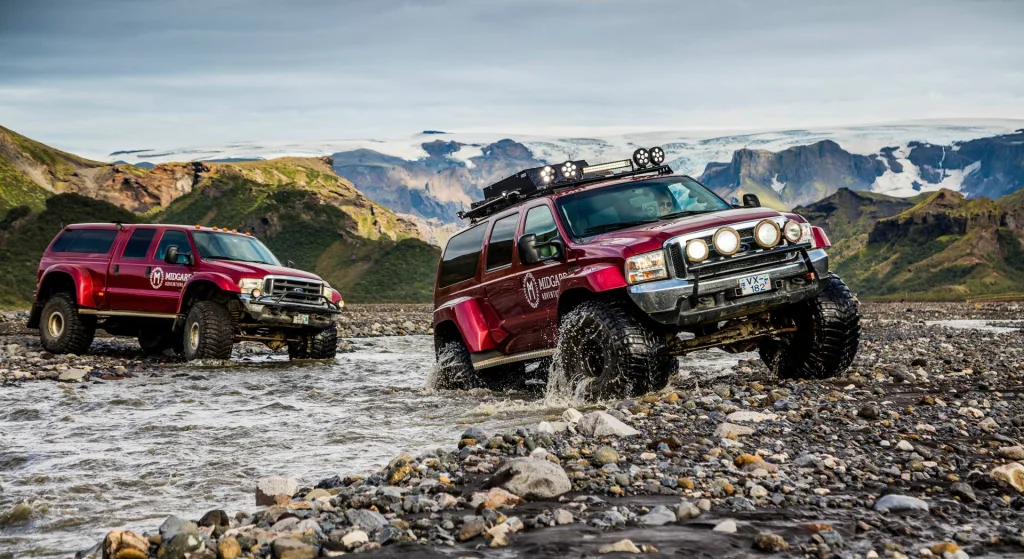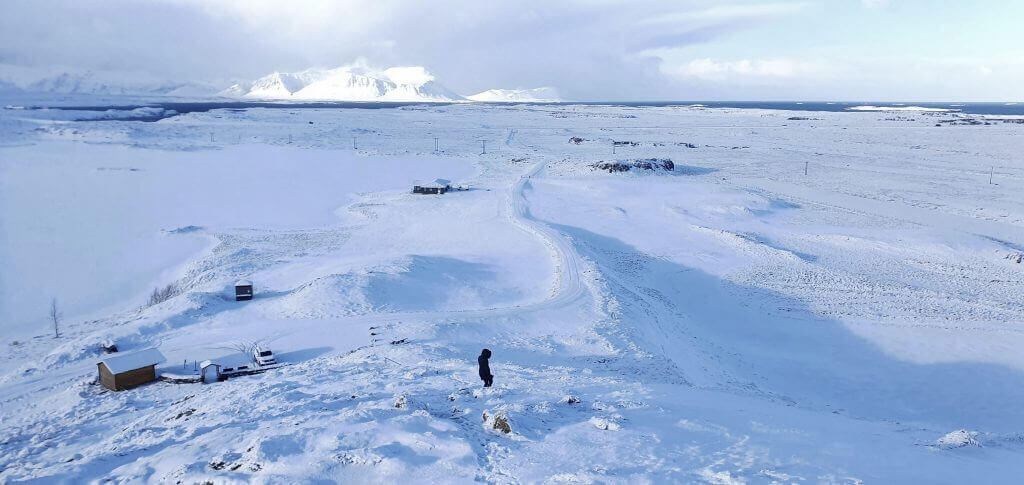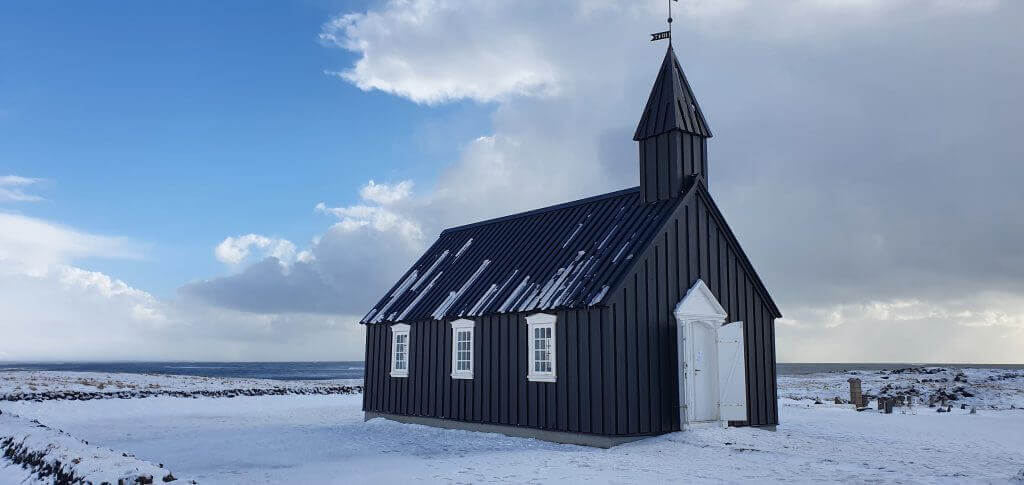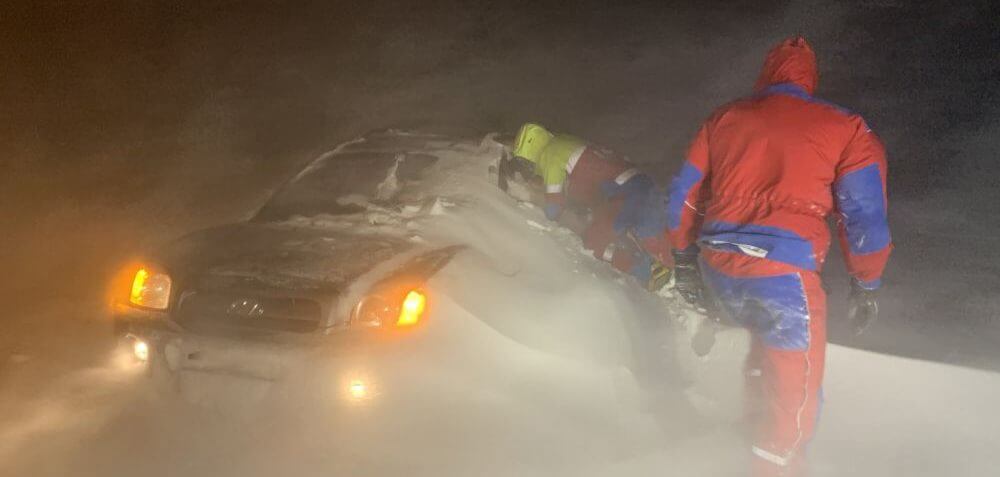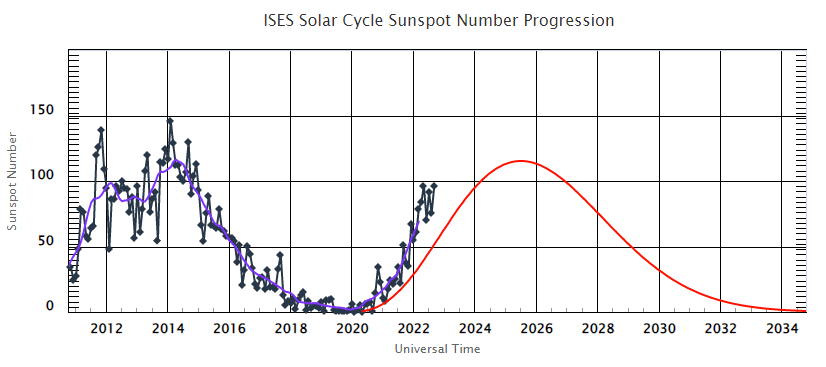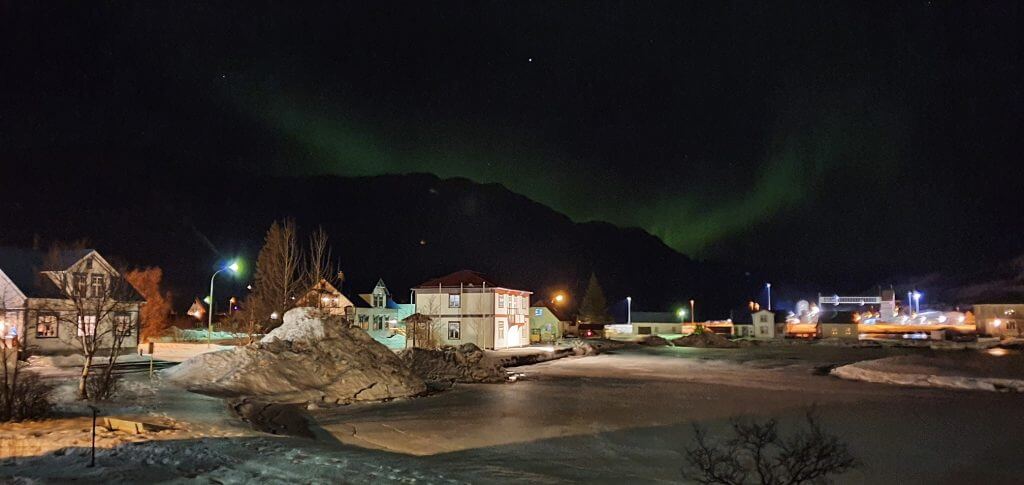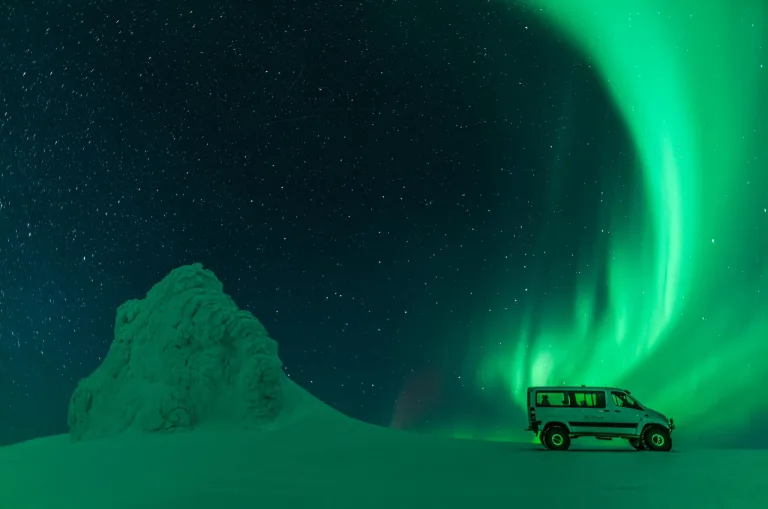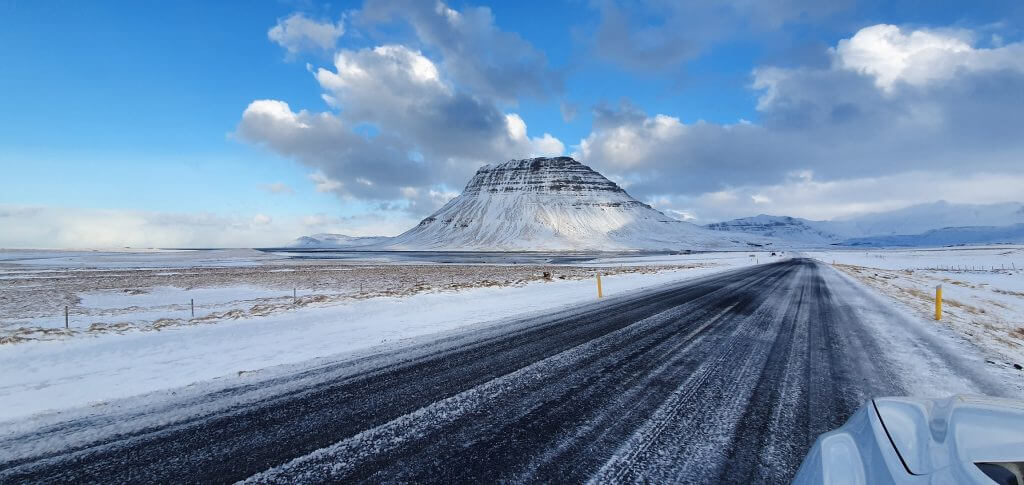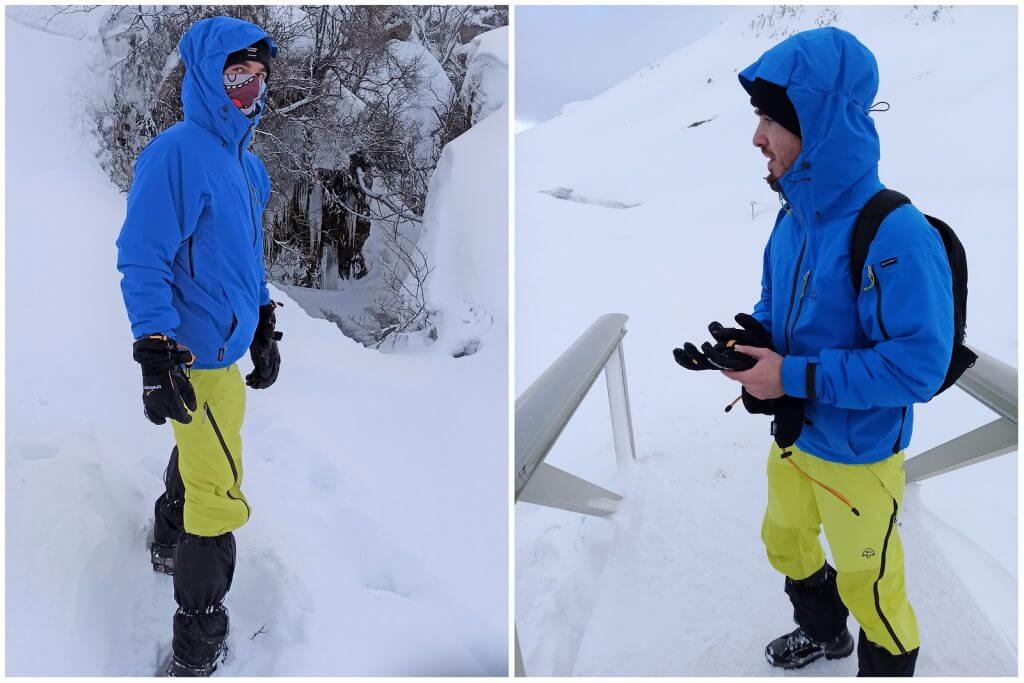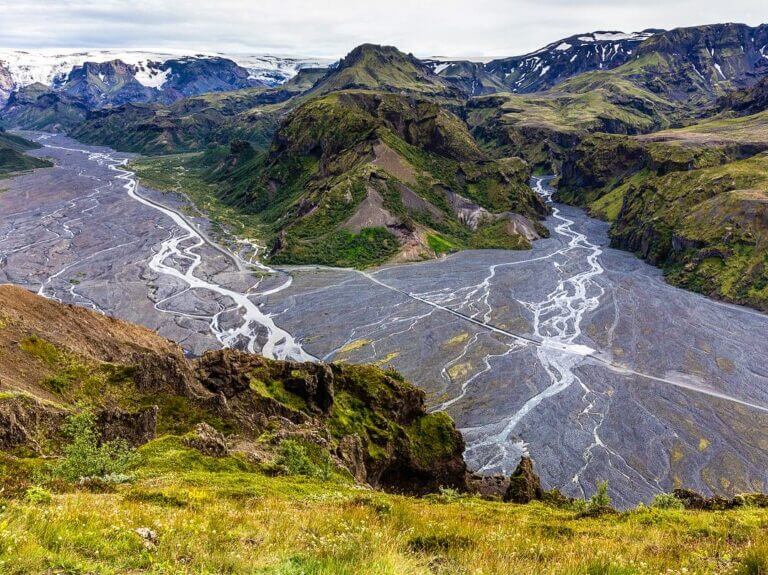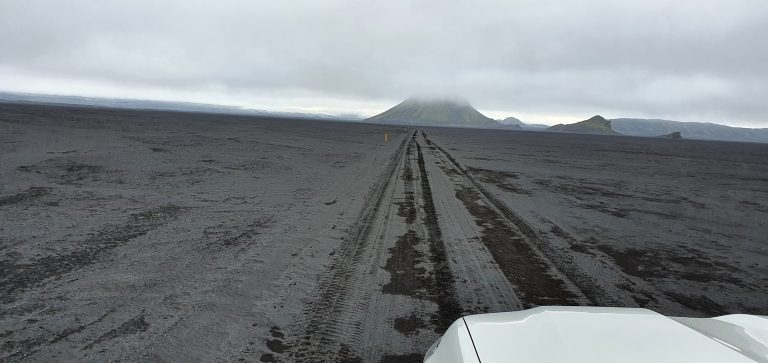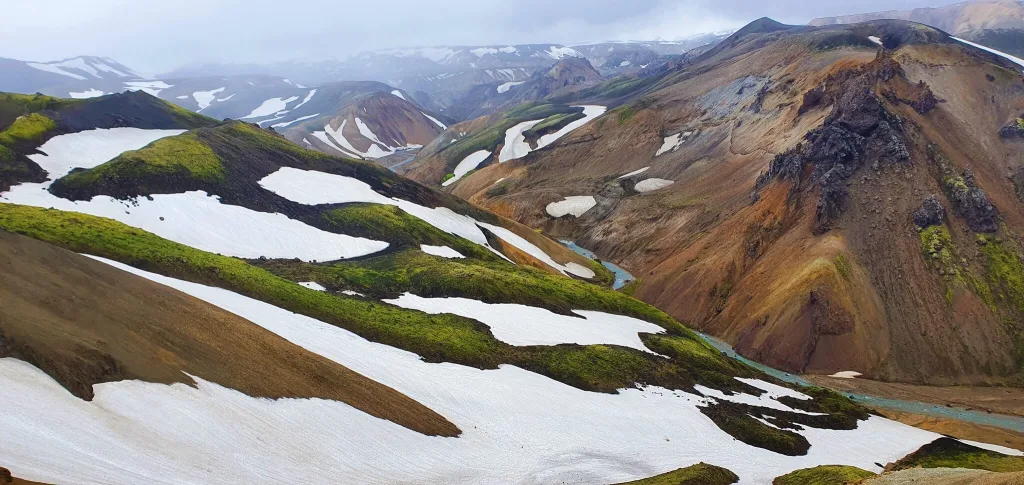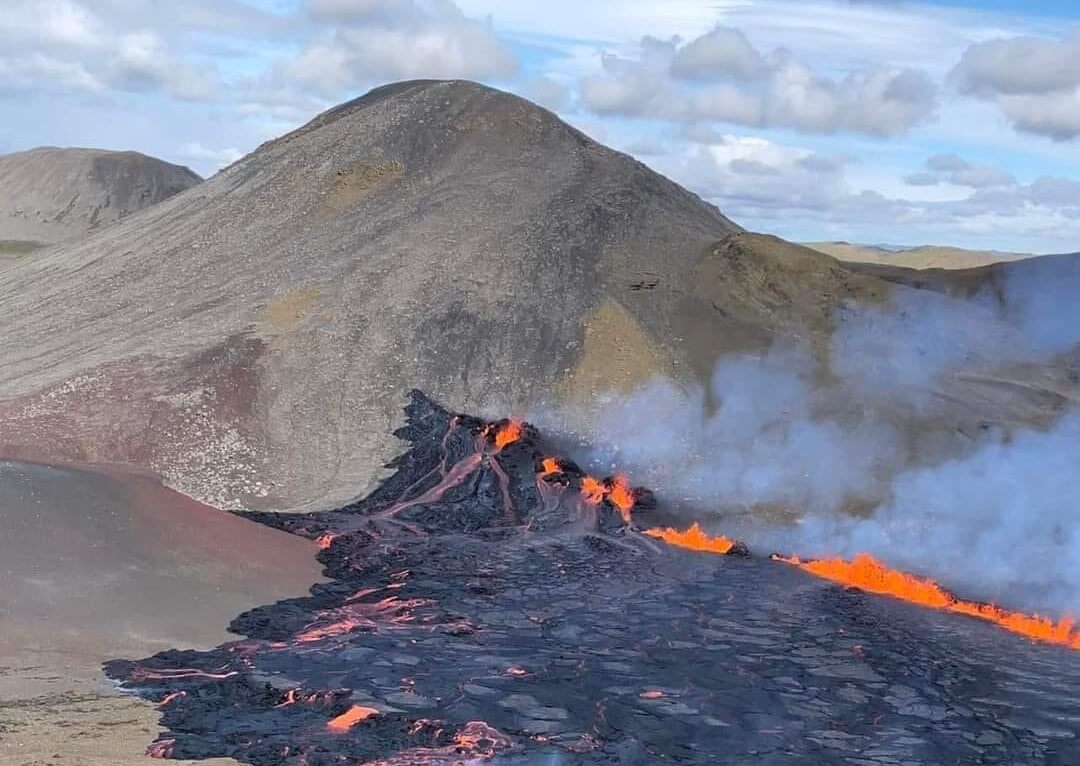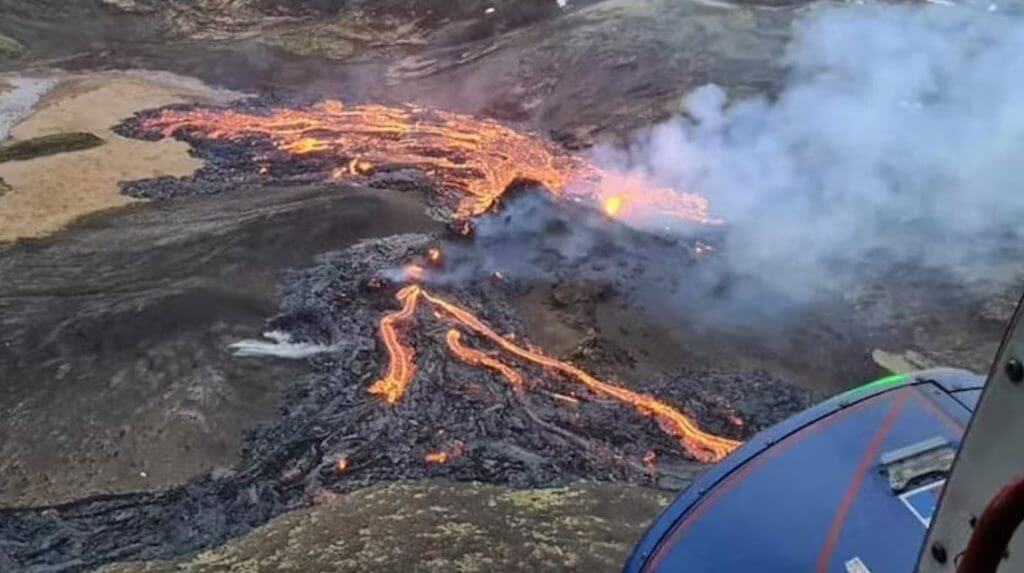Enjoy our unique and detailed list of all Icelandic hot springs! Currently 59 hotpots. If you think some info should be updated, feel free to contact us! Also, please, if you know of any hot springs not listed here, let us know and we will give you all the credit for that one! 🙂
We’ve spent months exploring all the different hot springs in Iceland and have visited almost all of them. Some of them are right next to the ring road, while some are almost impossible to find. Please remember, these are all very delicate and sensitive areas where you should never leave any trace or litter!
Looking for more amazing hidden spots? Check out our Map of 2000+ Best Places in Iceland.
Below we list all the wild hot springs, man-made hot springs, hot pools, and mountain hot tubes. We only list all the hot springs you are allowed to bathe in unless otherwise stated. We exclude hot caves like Stóragjá because it’s forbidden to bathe there. We also exclude classical public pools. The borderline is sometimes pretty thin in Iceland, so it’s impossible to create a perfect classification 🙂 Below is our map of hot pots in Iceland:
Map of all hot springs in Iceland
All the GPS points on this map are under strict copyright and are being tracked for an illegal use. You can’t copy any content without our consent.
Yes, there is Laugafell, there is Laugarfell, and there is also Laugavallalaug! All of these are different hotpots at different locations, each one differently amazing! And that is not all. There are actually two different hot springs with the same name – Krosslaug, located completely elsewhere! And then that’s also Krosnesslaug to make it easier to remember. That being said, hopefully, this list will help you to find your favorite one.
Contents
- Askja hot spring
- Biskupslaug – Reykir
- Blue Lagoon
- Brúarpotturinn
- Djúpavogskörin
- Drangsnes hot pots
- Forrest Lagoon
- Foss
- Fosslaug
- Galtahryggjarlaug
- Geosea geothermal sea baths
- Geothermal Goldfish Pond
- Gjörvidalslaug
- Grafarlaug
- Grettirs pool – Grettislaug
- Guðlaug baths
- Guðrúnarlaug
- Gvendarlaug
- Hauganes hot pots
- Hellulaug
- Heydalur
- Hjalteyri Hot Tub
- Hoffel hot tubes
- Hörgshlíðarlaug
- Hrunalaug
- Hvammsvík hot springs
- Húsafell canyon baths
- Hveravellir hot spring
- Kerlingarfjöll hot spring
- Krauma Natural Geothermal Baths
- Krosslaug hot pot
- Krosslaug hot spring Westfjords
- Krossneslaug
- Kualaug
- Kvika Footbath
- Landbrotalaug
- Landmannalaugar hot spring
- Laugafell
- Laugarfell
- Laugarvatn Fontana
- Laugavallalaug
- Lýsuhólslaug
- Marteinslaug
- Mývatn nature baths
- Nauteyrarlaug
- Nauthólsvík beach lagoon
- Pollurinn hot pool
- Reykjadalur hot river
- Reykjafjarðarlaug
- Reykjanes geothermal pool
- Sæberg hot tubs
- Secret Lagoon
- Seljavallalaug
- Skátalaug
- Sky Lagoon
- Snorralaug
- Strútslaug
- Sturlungalaug
- Vök baths
Askja hot spring

Me swimming in 25°C sulphuric water of Víti crater in Askja
Askja definitely isn’t a typical hot spring. It’s a big warm crater lake. It’s often known as Askja caldera. The road leading to Askja is long and challenging but really worth it. We wrote an entire guide about how to visit Askja.
Askja hot spring type
Askja warm lake is a completely natural and wild crater where warm sulfur water created this unique “blue hot spring lake”. There are no changing rooms at all, you are in central highlands here. Bathing is free of charge and requires a hike down the crater, which can be challenging. Water is not especially hot, actually much colder compared to typical hot springs, but still warm, with around 28°C / 82°F.
How to get to Askja hot spring
We wrote a detailed guide on getting to Askja. Roads to Askja are open only during full summer (July and August) and require at least a medium-sized 4wd car. The bigger, the better. “Can we do it in a Suzuki Jimny?”, yes you can try and you may succeed, but you may also not. Jimny is considered to be a small-sized SUV, which, when driven in the right way and in good weather may be enough. It may also not be enough if the opposite is the case.
In short, You can either come from the north via F88 or from the east by F905. You will then connect to F910 and lastly to F894. After parking your car, you will still have to hike/walk for another 30 minutes one way. If you don’t feel like driving to Askja, you can take an epic Askja tour!
Not sure what type of car to choose? Feel free to read how to choose a proper car or how to pick the best Icelandic car rental insurance. We also collaborate with Icelandic car rental companies to give you a discount and us a small commission at no extra cost to you.
Video of Askja hot spring
Tips about Askja hot spring
Pick a day with good weather, or take a Askja guided tour. A drive in rain and fog will usually bring you no joy and no views just stress. If you decide to drive to Askja, read carefully both our Askja guide and Askja F-roads descriptions. Last but not least, please choose a proper car, so that you don’t have to call 112 for rescue.
Once you reach Askja, to get down to the warm lake, you need to take a short but steep descent. In bad weather, this may get dangerous. We recommend taking the descent to Askja only in good weather. Better also use hiking poles for stability. Moreover, it’s not allowed to bathe in all parts of the lake. There are signs that you cannot cross, please watch out for them or you may get yourself injured!
To sum up, bathing in Askja is more challenging and more adventurous compared to most of the other hot springs out there. Adjust your expectations and prepare accordingly 🙂
Biskupslaug – Reykir
Blue Lagoon

The famous Blue lagoon by Epic Iceland archives
Blue Lagoon is an iconic hot lagoon with blue water between Keflavik Airport and Reykjavik. If you haven’t been there already, you simply have to. At least once in your life.
We picked for you the cheapest, reliable Tickets & Transfers to Blue Lagoon:
- Ticket only (click on the first option) – you can choose a Comfort or a Premium entrance
- Ticket + Reykjavik Roundtrip Bus (click on the first option) – you can choose a Comfort or a Premium entrance + pickup/dropoff point in Reykjavik
- Keflavik/Reykjavik 1-Way Bus (click on the first option) – the cheapest 1-way transfer to Blue Lagoon you can get
- Reykjavik Roundtrip Bus (click on the first option) – the cheapest roundtrip transfer to Blue Lagoon you can get
- Taxi Transfer from/to Keflavik/Reykjavik (click on the first option) – private transfer from and to Reykjavik or Keflavik Airport
All options above have free cancellation/rescheduling up to 24 hours before departure.
Brúarpotturinn
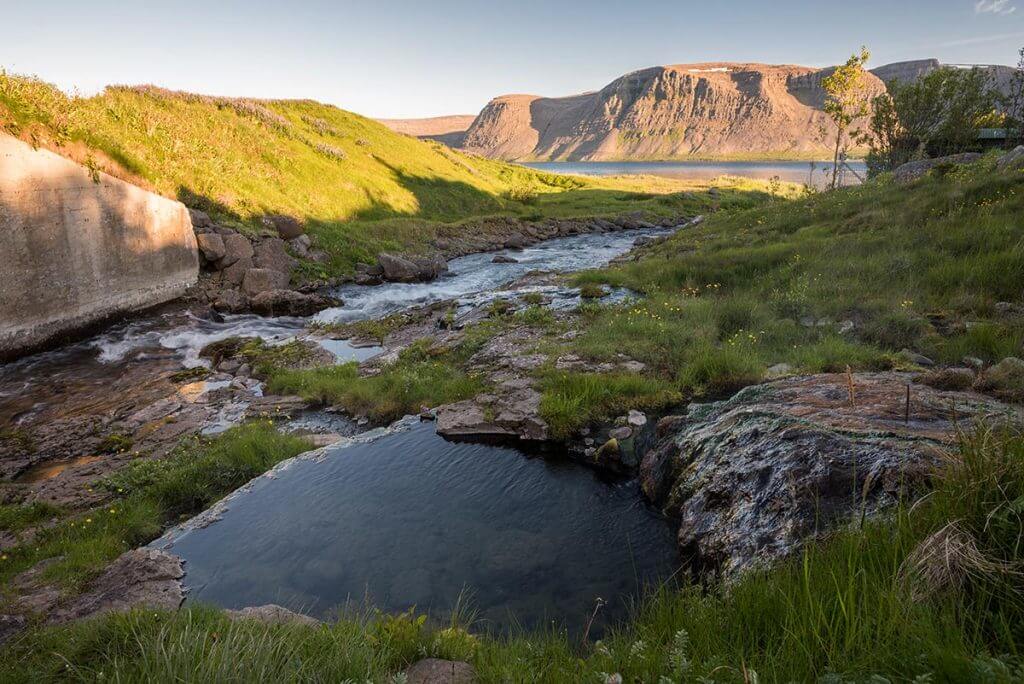
Brúarpotturinn hot spring. Image courtesy to: www.icelandthebeautiful.com
Djúpavogskörin

Djúpavogskörin hot spring, Djúpivogur
Closed as at April 2023. Should be repaired and reopened in the following weeks/months.
Djúpavogskörin hot spring, is virtually a hot bathing tank. It’s located right on the ring road next to Djúpivogur, as the name suggests. Yet, Djúpavogskörin is still nicely hidden away from the main road and you have to keep searching for it for a few minutes.
Djúpavogskörin hot spring type
Djúpavogskörin hot spring is basically a man made stone block with a really hot water flowing into it. When we visited Djúpavogskörin in summer, we were unable to bathe there, because the water was simply too hot, definitely more than 43°C (109°F). In the winter, though, the temperature seemed to be considerably lower and just right for soaking up 🙂 Based on this finding, we better recommend a winter visit.
How to get to Djúpavogskörin
You don’t need any special car to get to Djúpavogskörin, any car can do that. The only tricky part is a bit cumbersome parking. The hot spring is located right next to the ring road, where cars drive around 90km/h, so you need to slow down, find the right detour and don’t block other cars. The car park is just a worn-out grass field that can easily get icy or muddy.
Not sure what type of car to choose? Feel free to read how to choose a proper car or how to pick the best Icelandic car rental insurance. We also collaborate with Icelandic car rental companies to give you a discount and us a small commission at no extra cost to you.
Once you leave your car at this unmaintained parking area, you need to walk for around 5 minutes via an unmarked path to find the Djúpavogskörin hot spring. There’s a little hill right next to the parking area and the hot spring is hidden right below this hill. The easiest way is to follow the prior footsteps of someone, but even without it, you should still be able to find the hot spring, because it’s really close by.
Video of Djúpavogskörin
Tips for Djúpavogskörin hot spring
Hot spring is free of charge, there was no donation box at the time of our last visit. There are also no changing rooms, but there’s a clothes-hanger. The short path leading to the actual hot spring can be really muddy when it’s wet, so get ready for that with your footwear.
Drangsnes hot pots

Drangsnes hot pots. Image courtesy to: www.love-iceland.at
Forrest Lagoon
New luxurious lagoon already open.

Forrest lagoon iceland. Image courtesy to: www.forestlagoon.is
Foss

The Foss. Hot spring waterfall next to Akureyri. Image courtesy to Instagram @libertadoo
Fosslaug

Fosslaug hot spring
Fosslaug hot spring is a beautiful stop when driving near Varmahlíð, definitely worth a little detour. There’s also a waterfall – Reykjafoss – and the whole place is magical especially during the sunset.
Fosslaug hot spring type
Bathing in Fosslaug is free of charge. We couldn’t find any money box, as is the case with many other Icelandic hot pots. There are no changing rooms, so just don’t be shy 🙂 Hot spring can accommodate up to 10 visitors, however comfortably maybe only up to 5. Fosslaug is a natural hot spring (man maintained) so naturally, the water isn’t entirely clear, but we think it belongs to the better ones when compared to other Icelandic hot springs. Water in Fosslaug is pleasantly hot with a temperature of around 38°C / 100°F.
How to get to Fosslaug
In summer, you can reach Fosslaug with any 2wd car. In winter a 4wd car would be better. Finding Fosslaug is part of the adventure. Although Google maps do show its location, it’s not that straightforward to find it anyway. We firstly turned right a few tens of meters earlier and ended up parking our car at the wrong spot, which we however didn’t realize at that time. After a few minutes of walking around, we eventually reached a dead-end and came back to our car.
Read about how we chose our car. Or just get free discounts for your Icelandic car rental.We realized we should have taken the next turn right. This turn will take you to the small, but pretty well visible car park. There you may leave your car (probably along with several other visitors, because Fosslaug is pretty popular and easily accessible). After parking your car at Fosslaug car park, it takes about 10-15 minutes of walking through the easy trail to reach the actual hot spring. As far as I remember, there are 1 or 2 gates which you have to open and then also close after you pass.
Video of Fosslaug
Tips about Fosslaug
On your way to Fosslaug, you will also pass the beautiful Reykjafoss. One of the smaller Icelandic waterfalls, Reykjafoss, is especially picturesque during sunrise and sunset, which we were lucky enough to experience.
What we liked the most about Fosslaug is that it overlooks a river and if you are lucky, you may observe a beautiful sunset over the river! Despite not being remote and thus possibly a bit touristy, Fosslaug is definitely one of our favorite hot springs.
Galtahryggjarlaug
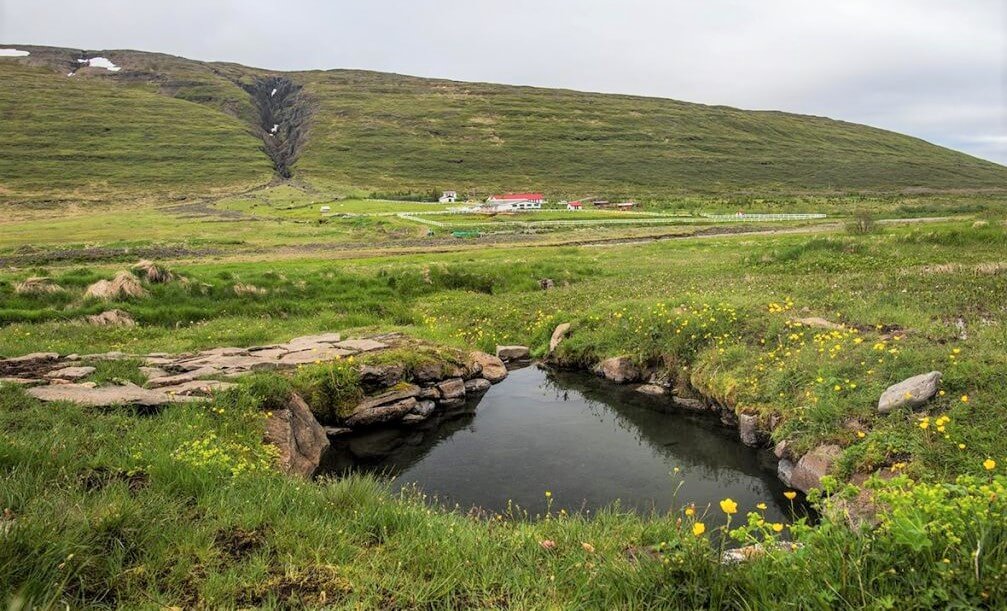
Galtahryggjarlaug hot spring. Image courtesy to: www.icelandthebeautiful.com
Geosea geothermal sea baths

Husavik Geosea geothermal baths
Geosea baths are one of our favorite hot springs in Iceland! They offer one-of-a-kind scenery to admire and are very tranquil and remote.
Geosea hot spring type
Geosea baths are modern, man-made baths with all the facilities you may possibly need. Ample changing rooms, restaurant, hot spring bar, and many more!
There are two big pools. The bigger one is hotter, and the smaller one is less hot but still warm.
Our readers can use a 5% discount code: EPICICELAND for Geosea Geothermal Sea Baths on online tickets.
How to get to Geosea
Geosea geothermal sea baths are located at the northwesternmost part of Húsavík. They are easy to get to all year round, with paved and well-maintained roads all around.
Tips about Geosea
Geosea is great to visit in basically any kind of weather. Soaking in the hot spring is especially pleasant when it’s cold or rainy out there, so it’s a great activity for bad weather days!
It’s often quite windy near the sea front, so switching the pools can feel chilly for a moment 🙂
We recommend coming on a day with no thick fog, to fully enjoy the awesome views!
Geothermal Goldfish Pond
Gjörvidalslaug
May be open, may be locked. It’s recommended to ask locals for permission.
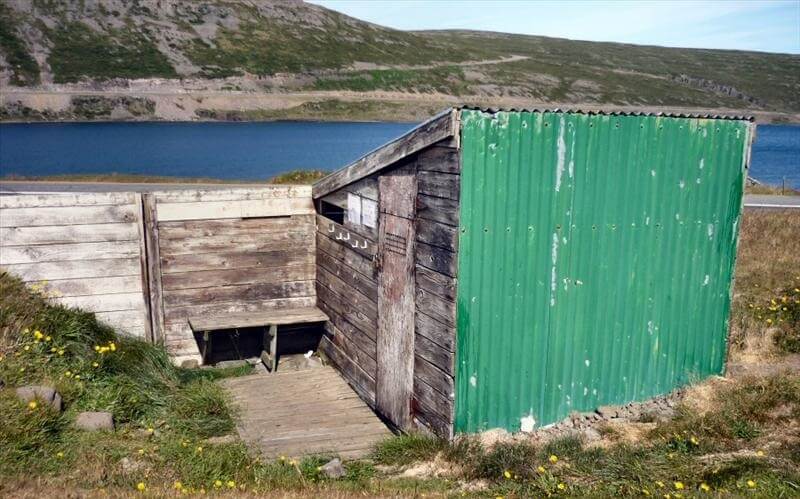
Gjörvidalslaug hot spring. Image courtesy to: Harpa Hreinsdóttir
Grafarlaug

Grafarlaug hot spring. Image courtesy to: www.icelandthebeautiful.com
Grettirs pool – Grettislaug

Grettislaug hot spring. Image courtesy to: www.icelandthebeautiful.com
Guðlaug baths

Guðlaug Baths. Image courtesy to: www.facebook.com/Gudlaug.NaturalPool/
Guðrúnarlaug
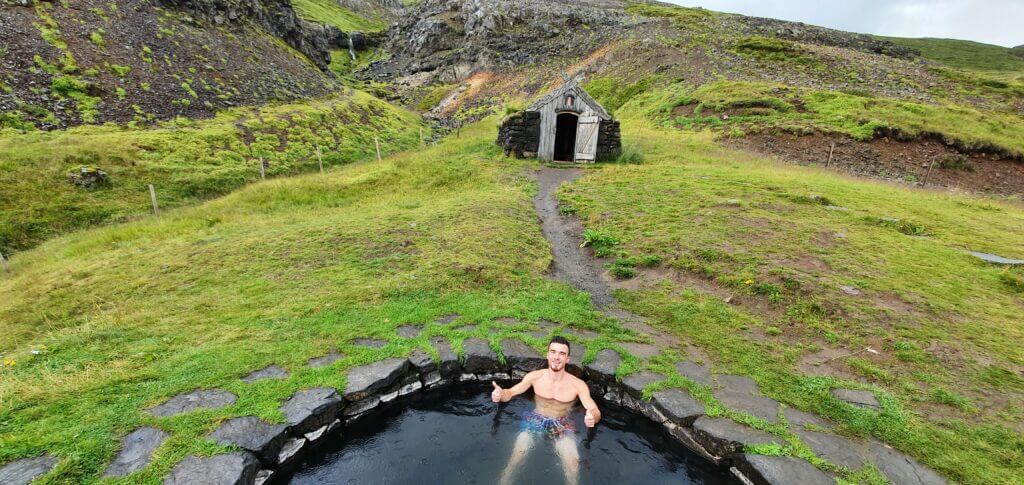
Shelter for changing clothes and Gudrunarlaug hot spring
Guðrúnarlaug is one of the most picturesque hot springs in Iceland. It’s very well accessible.
Gudrunarlaug hot spring type
Guðrúnarlaug hot spring is man-made and man-maintained. It also has a cute little “cottage” changing room. Bathing was free of charge, we didn’t notice any donation box, but one may have been added in the meantime. The water was around 38°C / 100°F hot at the time of our visit, i.e. very pleasantly hot.
How to get to Gudrunarlaug
In summer, Guðrúnarlaug is easily accessible by any 2wd car. Read about how we chose our car. Or just get free discounts for your Icelandic car rental.
Video of Guðrúnarlaug
Tips about Guðrúnarlaug
Guðrúnarlaug is definitely a bit more touristy compared to, for example, Lýsuhólslaug. The reason for that is its proximity to ring road and to Westfjords, i.e., it’s quite easily accessible. The same is true when it comes to access to the actual hot tube – it’s a 2-minute walk from the car park, which sits right next to it. Google Maps are also quite precise about the location of Gudrunarlaug, so feel free to orientate according to them.
Guðrúnarlaug is located next to the small rural campsite (we didn’t see anyone camping at the time of our visit, during Covid-19 times) and something which looked like a school.
Gvendarlaug

Gvendarlaug hot spring. Image courtesy to: www.laugarholl.is
Hauganes hot pots

Hauganes hot pots
What’s probably best about Hauganes hot springs is their location. They are situated just few meters from the actual fjord. This guarantees you an amazing view over the fjord while enjoying pleasantly hot water.
Hauganes hot spring type
Hauganes hot springs consist of 4 pools. The first pool (and the most legendary one) is shaped like a boat and definitely is pretty cool to bath in. In summer, the “boat-pool”, however, has the coldest water out of all pools (around 30°C), so it’s more a “warm spring” rather than “hot spring”. The other 3 pools (not that cool looking) have higher temperature though (35°C+). To us (and to our local Icelandic co-visitors) it seemed like the hottest pool was the rightmost one, that’s why we spent almost all our time there.
In winter, temperatures of the pools changed, however. The boat-shaped one felt just right with about 35°C, while the other two hot tubes were unbearably hot with more than 40°C.
There’s also a changing room, so you don’t have to do it outside in the cold as is the case with many wild hot springs. Price for Hauganes hot springs is 1000kr/person (ca. 7Eur/8USD). When the owner is present, you can pay it directly to him. If he’s not present, and you have cash, there’s a cash box right next to the pools. And thirdly, if you don’t have cash, you can pay by card at the nearby restaurant Baccalá.
How to get to Hauganes hot pots
Hauganes hot pot is easy to find (e.g. on Google maps, surprisingly in Hauganes). Hauganes hot springs are easily accessible by any 2wd car. Read about how we chose our car. Or just get free discounts for your Icelandic car rental.
Video of Hauganes hot pots
Tips for Hauganes hot pots
Hauganes hot springs are located just next to the little campsite, so there’s a high chance, you won’t be alone in here, given the hot pots are not that remote, nor hard to access. At the time of our visit, there were 2 groups of visitors, plus us and the place didn’t feel crowded at all. A capacity of one pool is around 8 people, therefore it’s not that easy for hot pools to become crowded. For those interested – you may even rotate between hot springs and sea, which lies right next to hot springs. Just don’t forget to shower yourself before each hot spring dive (the sea is dirty and salty).
Hellulaug

Hellulaug hot spring
Hellulaug is a nice hot spring situated in one of the fjords in the southern part of Westfjords.
Hellulaug hot spring type
Hellulaug hot spring is a man-made and (not that much) man-maintained rocky hot spring. Hot spring is free to use, I don’t remember a donation box next to it, but there may have been one. There’s no shelter, nor changing room, you have to change your clothes either in a car or just next to the hot spring. The water is pleasantly hot, with some 37°C / 99°F.
How to get to Hellulaug
In summer, Hellulaug is accessible by any 2wd car. Read about how we chose our car. Or just get free discounts for your Icelandic car rental.
The distance from the nearest car park to the hot spring is around 2 minutes of walking. You can get to Hellulaug from the main road 60. Just be sure to finally turn on Hellulaugavegur and end up here, because there’s one other (wrong) spot on Google maps. You will leave your car at a small, gravel parking lot. From there you have to descent about 2 minutes to reach the pool itself.
Video of Hellulaug
Tips about Hellulaug
Hellulaug is situated right in the heart of the fjord. If you are into “sauna style” bathing, you may even alternate between bathing in the hot spring and bathing in the ice-cold sea. Water in the hot spring is very pleasant though, having some 37°C (according to my professional, read as „guessed“, assessment).
If it rains, since there’s no shelter, some of your things will probably get wet, unless you cover them with something. We didn’t mind, though, because Hellulaug was probably the last stop of our trip.
Heydalur

Heydalur hot spring. Image courtesy to: http://kitiniceland.blogspot.com/
<
Hjalteyri Hot Tub
Run by Strýtan dive centre, ask for permission / pay for access.
Hoffel hot tubes

Hoffel hot tubes. Image courtesy to: www.icelandthebeautiful.com
Hörgshlíðarlaug

Hörgshliðarlaug hot spring in the heart of fjord
Hörgshliðarlaug is a nice remote hot spring hidden in one of the fjords in the northern part of Westfjords. This is one of our favorite hot springs in Iceland.
Horgshlidarlaug hot spring type
Hörgshliðarlaug hot spring is a man-made and man-maintained seaweed hot spring. Hot spring is free to use, I don’t remember a donation box next to it, but there may have been one. There’s an old shelter next to the hot spring, which serves as a changing room. The water is pleasantly hot, with some 37°C / 99°F.
How to get to Horgshlidarlaug
In summer, Hörgshliðarlaug is accessible by any 2wd car. Read about how we chose our car. Or just get free discounts for your Icelandic car rental.
Not only tough to pronounce, but also tough to find, that’s Horgshlidarlaug. At the time of our visit, road 633 was closed, so we had to use the northern part of road 61 and make a detour south (left) right before crossing the Mjóifjörður fjord. The distance from the nearest car park (next to the road) to the hot spring is around 2 minutes of walking.
Video of Hörgshlíðarlaug
Tips about Hörgshlíðarlaug
Horgshlidarlaug is a dirty, old, full of seaweed hot spring with a true Icelandic atmosphere. It lies right in the heart of the fjord, so you will be able to watch the fjord while soaking in the hot pot. If you are lucky enough, there may even be seals around (we haven’t seen any though).
If you are into “sauna style” bathing, you may even alternate between bathing in the hot spring and bathing in the ice-cold sea. Water in the hot spring is very pleasant though, having some 37°C (according to my professional, read as „guessed“, assessment).
Hrunalaug

Tranquil scenery of Hruni hot spring
Hrunalaug is one of the most picturesque Icelandic hot springs. Although it’s nowadays already really touristy, it definitely belongs to the top Icelandic hot springs.
Hrunalaug hot spring type
Hrunalaug hot spring is man-made and man-maintained. There’s an authentic wooden shelter (similar to the one next to Guðrúnarlaug) serving as a changing room, right next to the pool. Hrunalaug hot spring has changed into a paid hot spring with opening hours as of 2024. The water was around 38°C / 100°F hot at the time of our visit, i.e. very pleasantly hot.
How to get to Hrunalaug
Hrunalaug (or Hruni) is easily accessible by any 2wd car. Read about how we chose our car. Or just get free discounts for your Icelandic car rental.
Use Google maps. They were quite precise about the location. There’s actually a car park near the hot spring. From the “car park” it’s about 3 minutes of walk. You shouldn’t get lost, as far as I can remember there’s even a sign pointing towards hot spring.
Video of Hrunalaug
Tips about Hrunalaug
There are actually several pools, some of them smaller, some of them bigger. All pools do contain heated water, but each one has a different temperature. The hottest one is also the smallest and is the one right next to the shelter. It’s ideal for 2 people, and if you are OK with some squeezing even for 4.
I can confidently nominate Hruni hot spring for winning the award of the most authentic Icelandic hot spring. It is, without doubt, one of the best hot springs we’ve ever been to. Thanks to many aspects. Firstly, it’s a place secluded from anything else with no buildings or roads around. Secondly, the landscape surrounding it is truly peaceful and picturesque. Thirdly, the hot pot itself looks like to be from some kind of fairy-tale. And, importantly, the water (in the main one) is pleasantly hot with some 38°C according to my professional (read amateur) assessment.
The main downside of Hrunalaug is that it’s getting really crowded. It’s easily accessible and beautiful at the same time. I recommend either coming here off-season or during some weird times (like really soon in the morning, or during the night). Also Hrunalaug now has opening hours and an entrance fee. More info on Hrunalaug entrances here.
Hvammsvík hot springs

Hvammsvík hot springs SPA. Image courtesy to: https://hvammsvik.com/
Hvammsvík hot spring type
Hvammsvík is a man-made and well maintained, unique hot spring located in the picturesque Hvalfjörður fjord. There are currently eight different pools with various temperatures. There’s also a restaurant and a brand new changing room.
5% discount code: EPICICELAND5 for Hvammsvík on Classic and Comfort tickets + cheapest bus transfer with tickets (no discount).
Hvammsvík has recently been gaining a lot of popularity, because it’s one of the most beautiful hot springs in Iceland that is still not crowded! It’s surrounded by ocean, mountains and black sand beaches that create a one-of-its-kind scene you’re just tempted to visit again and again.
How to get to Hvammsvík
It’s not a coincidence Hvammsvík is getting so popular. One of the main reasons is, it’s located just a 45-minute drive north of Reykjavik, making it a great day trip from Reykjavik.
The easiest way to reach Hvammsvík is to drive there. Another alternative is to take a day tour from Reykjavik (5% discount code: EPICICELAND), which includes the visit of Hvammsvík.
Tips about Hvammsvík hot spring
Did you know that water levels of some of the pools and their temperatures vary with tide? Well, they do! Hvammsvík lies right next to the Atlantic ocean, that’s why. This actually makes every visit to Hvamssvík unique!
The admission includes access to all hot springs, a steam room, beaches, a jump into the ocean (if you dare), as well as free use of their paddle boards.
Húsafell canyon baths
This is a paid hot spring on a private property. You have to buy the package to visit it.

Húsafell Canyon Baths. Image courtesy to: www.husafell.com
Hveravellir hot spring
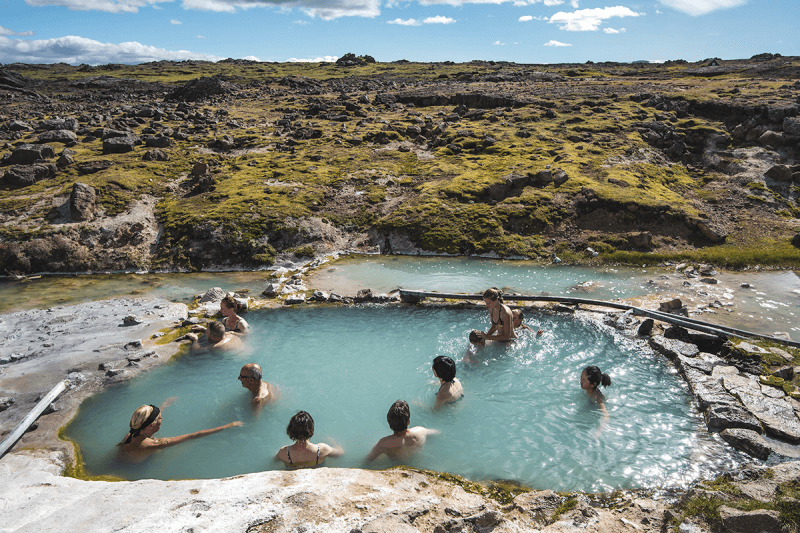
The only Hveravellir hot spring for bathing. Image: courtesy of hiticeland.com
Hveravellir is a hot spring area in the middle of F35 road with one nice free hot spring available for bathing. We wrote a detailed guide on visiting Hveravellir hot springs.
Hveravellir hot spring type
Hveravellir hot spring is man-made and man-maintained. It has an uncovered exterior changing space. Bathing is free of charge, we didn’t notice any donation box, but one may have been added in the meantime. The water is pleasantly hot, with some 38°C / 100°F.
How to get to Hveravellir
You need a 4wd car to access the Hveravellir area. Road 35 leading there (former F35), a.k.a. Kjölur or Kjalvegur is open for tourists without super jeeps only from June to September.
In summer, the road F35 (Kjalvegur) is not hard to drive on, though. You may rent basically any 4wd car to drive it. Read about how we chose our car. Or just get free discounts for your Icelandic car rental.
Once you leave F35 towards Hveravellir, it’s just a short, easy drive and you will soon find a parking lot in front of a small restaurant. Almost next to the parking lot lies a nice, public, free hot spring. The distance from the nearest car park to the hot spring is around 5 minutes of walking.
Video of Hveravellir
Tips about Hveravellir
Since it is so close to the car park, there’s a high chance someone will be inside most of the time. Nevertheless, the hot spring is big enough and the water is pleasantly hot, with some 38°C (according to my professional assessment). On the other hand, the air temperature felt really cold, something like 7-8°C even in the middle of August. So again – be prepared for that – you are in the middle of Iceland, in highlands.
I guess my expectations for Hveravellir were too big (read further to find out why). When planning our trip, I had read that there are “several hot springs in the Hveravellir area”. Moreover, seeing pictures like this had instantly made me a Hveravellir enthusiast. Well, the reality was a bit different. We were hiking for 1 hour around the entire area, but we haven’t found any hot springs, other than the main one near the parking lot.
We finally also asked the local at the restaurant who just confirmed our realization by saying: “you can bath only in this hot spring, next to the car park. There may be also some other hot springs further away, but you shouldn’t bathe there”.
Kerlingarfjöll hot spring
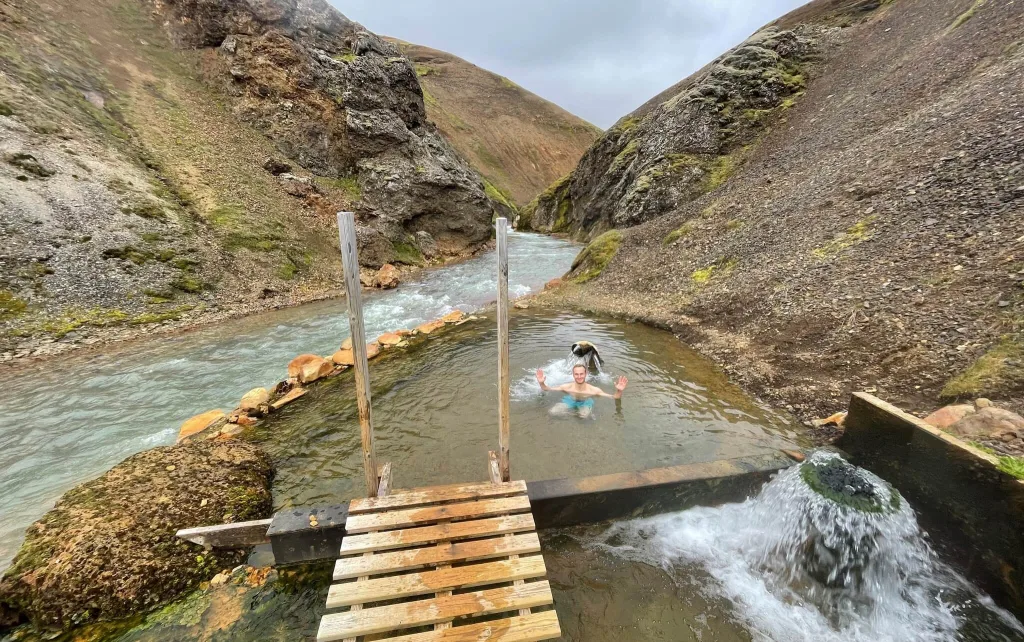
Bathing alone at Kerlingarfjöll hot spring
There’s only one hot spring in Kerlingarfjoll available for bathing. And it is well hidden from the mainstream trails of the Hveradalir geothermal area!
The entire scenery around the hot spring looks entirely like from another planet. This is one of our favorite hot springs in Iceland.
Kerlingarfjöll hot spring type
The Kerlingarfjoll hot spring is a man-maintained but originally wild hot spring. It has man-made walls and a wooden platform for changing clothes and entering the pool.
There are actually two pools next to each other, one warmer and the other less warm.
How to get to Kerlingarfjöll hot spring
Hike to Kerlingarfjoll hot spring is easy and totally worth the experience. Just be sure to bring a towel and clothes to change, because the hike can easily take you 1.5 hours as a round-trip.
The hike starts only and only at the Highland Base (former Kerlingarfjoll Mountain resort). There’s no other trail. And it’s actually not trivial to find the beginning of the trail. There were no signs at the time of our visit, so we asked the visitors coming from the opposite direction, who pointed us toward the trail.
After about 10 minutes of walking from and through Kerlingarfjoll mountain resorts, we’ve finally reached a little crossroad with a signpost pointing to a trail to the Kerlingarfjoll hot spring. The sign says it’s just 1km to the hot spring, but that’s not true. It’s actually double that – 2km. It’s not long, but it’s also not a 5-minute walk in slippers 😉
Tips for Kerlingarfjöll hot spring
When we first visited Kerlingarfjoll, and the place was called “Kerlingarfjoll hot spring area” or “Hveradalir hot spring area”, we had thought there will be many hot springs to bathe in. We were wrong. Yes, there are many hot springs, but you can’t bathe in any of them! Except one. The vast majority of these hot springs are “just” bubbling mud holes that are either too small, or too hot (or both) to bathe in.
Water in the warmer of the two pools had temperature of around 37°C in July, which was more than just pleasant after a full day of hiking. The water was also quite clear, at least if compared to other wild hot springs. Don’t expect SPA-like clean, though, this is wild and remote Iceland in its fullness.
Krauma Natural Geothermal Baths

Krauma hot baths. Image courtesy to: www.krauma.is. 10% discount code for Krauma: EPICICELAND
Krauma hot spring type
Long story short, Krauma is a nicely-maintained modern hot spring / hot spa with all the facilities you could probably need – showers, restaurant, café, changing rooms – all being new and with a glamorous touch. There are several pools of various (hot) temperatures and also an ice-cold “dip pool”. It is located in the exterior and has a view over nearby lands, which makes a visit even more pleasurable!
Our readers can use a 10% discount code: EPICICELAND for Krauma Hot Springs when booking online in advance.
How to get to Krauma baths
A normal road leads to Krauma, you can make it with any car. Read about how we chose our car. Or just get free discounts for your Icelandic car rental.
Video of Krauma baths
Tips for Krauma baths
If you are into more glamorous hot springs with all of the facilities, services, and comfort and you don’t mind paying for that, you’re gonna be happy! As was my wife 🙂
Me, personally, I prefer wilder experiences with remote (and uncomfortable) hot springs. But hey – Iceland has enough of both of these for everyone!
Krosslaug hot pot

Krosslaug hot pot
UPDATE from our reader: “I recently visited Krosslaug hot spring and noticed a big information board at the entrance of the property, stating that this hot spring is considered a national heritage site and one should NOT BATHE in.” Thank you Mirko for this info from 29.5.2025.
Krosslaug hot pot type
Krosslaug is a natural hot spring (man maintained). Bathing was Krosslaug is free of charge. We couldn’t find any money box, as is the case with many other Icelandic hot pots. There are no changing rooms, so just don’t be shy 🙂
Krosslaug is pretty little, suitable comfortably maybe for 2 people, and less comfortably for 4. The temperature is pleasant, though, with around 38°C according to my (non) professional estimate. The water is not entirely clean with some plants floating in it, though much clearer compared to some not well-maintained algae pools like Seljavallalaug.
How to get to Krosslaug hot pot
Krosslaug is located right next to road 52. You can leave your car at the little car park and from there it’s just a 2-minute walk. Read about how we chose our car. Or just get free discounts for your Icelandic car rental.
Video of Krosslaug hot pot
Tips for Krosslaug hot pot
Beware, there’s also another hot spring called Krosslaug 🙂 This one is located in Westfjords, though. See below.
Krosslaug hot spring Westfjords

Krosslaug hot spring in Westfjords. Image courtesy to: www.icelandthebeautiful.com
Krossneslaug

Krossneslaug
Krossneslaug is a really unique, one-of-its-kind hot pool literally at the end of the world (or at least all Icelandic roads).
Krossneslaug hot spring type
Krossneslaug is a man-made and man-maintained hot pool. There’s an access fee of around 8 USD. For that price, you can use the whole infrastructure around – changing rooms, showers, toilets, etc. There is 1 big “infinity” pool with a view over the fjord and 1 small hot tube as a bonus. The bigger, rectangular pool has a water temperature of around 34°C / 93°F and a smaller, more modern hot tub with a temperature of around 38°C / 100°F.
How to get to Krossneslaug
Although officially any 2wd car is allowed in here, I do recommend a 4wd car and some guts to reach Krossneslaug. Road 643 heading towards Krossneslaug could easily be classified as an Icelandic F-road. It doesn’t contain any river crossings but it contains almost everything else an F-road may contain. Potholes, gravel, narrow passages, steep parts, driving on the edge of the cliffs, …
Read about how we chose our car. Or just get free discounts for your Icelandic car rental.
Google Maps mark Krossneslaug quite precisely. They just don’t show that the “car park” (or better said the place next to the road where you may leave your car) is tens of meters above the pool. That means, you have to leave your car up, next to the road and you have to walk down the path to Krossneslaug itself. Only the owner of the pool has an access to reach the pool by car.
Video of Krossneslaug
Tips about Krossneslaug
Bathing in Krossneslaug is again a once-in-a-lifetime experience. It definitely belongs to the Top 5 of Icelandic hot springs. Once in the pool, you will again feel like being in some kind of fairy tale. Just you, a hot pool and a view of the endless sea. The smaller, hotter bathtub even has a windshield (I guess for cases of severe weather?).
Before our departure, I asked the owner whether it does make economic sense to maintain such a pool at the end of the world. He just smiled and replied that from June till 1st half of August usually hundreds of people come per day. So this hot spring may get a bit touristy in the full season.
Kualaug
Kvika Footbath

Kvika footbath hot spring. Image courtesy to: www.icelandthebeautiful.com
Landbrotalaug

Source of the Landbrotalaug hot spring resembles a mud hole.
Landbrotalaug is a wild hot spring located in the middle of nowhere in the eastern part of Snæfellsnes. The main hot spring is a tiny geothermal pool, accompanied by a larger but muddier one, that serves as a water source for both hot springs.
Landbrotalaug hot spring had been closed to the public for a longer time. However, it reopened again in 2024.
Landbrotalaug hot spring type
Lanbdrotalaug It’s a man-made hot pot, not much maintained. Water is typically very hot. There are no changing rooms, you’re all alone in the wilderness.
How to get to Lanbdrotalaug
Landbrotalaug is located on the easternmost end of the Snaefellsnes peninsula. The hot pot is well accessible by any car. The final access road may be slippery, icy, or full of snow in winter, so please take care not to get stuck.
Once you get out of the car, it takes a few minutes of walk to find it.
Video of Landbrotalaug hot spring
Tips about Landbrotalaug hot spring
Firstly, there are two hot springs. The bigger and muddier one is located right next to the water supply pipe. The smaller one you’ve most likely seen in all these sexy pictures is located 100 meters to the right behind a wall.
Secondly, this is a wild hot spring with no cabin, so if you prefer luxury lagoons or if you have sensitive skin or anything similar, this will most likely not be a place for you.
Thirdly, the main Landbrotalaug pool fits only two or three people max. If you’re in a hurry and there is a crowd, it may be best to skip it.
Fourthly, if you are going in the rain, there may be mud all around. Be ready for it, or don’t go.
Landmannalaugar hot spring

Landmannalaugar hot spring. Picture courtesy of https://www.foodiebaker.com/day-4-iceland-travelogue/
Landmannalaugar hot spring (sometimes called Brennisteinsalda) is the only hot spring suitable for bathing in the main Landmannalaugar area. It is located right next to Landmannalaugar campsite.
Landmannalaugar hot spring type
Landmannalaugar hot spring is one of the few 100% real natural hot springs (without any human interference) we’ve seen in Iceland so it’s definitely worth trying. It’s basically a stream of some really hot water (>50°C / 122°F) flowing into the small river and you may bathe in this river. The water temperature gradually goes down the more you go away from the source. The hot spring is free to use. It has an uncovered exterior changing space.
How to get to Landmannalaugar hot spring
You need a proper 4wd car to reach Landmannalaugar and Brennisteinsalda hot spring. However, there’s a huge difference between whether you come from the northern side of F208 or the southern side. The distance from the nearest car park to the hot spring is around 5 minutes of walking.
Read more about these different routes in our F-road guide. Read also about how we chose our car, as this is essential for your Icelandic trip. Or just get free discounts for your Icelandic car rental.
Video of Landmannalaugar hot spring
Tips about Landmannalaugar hot spring
The river you firstly need to jump in actually isn’t so hot, maybe around some 26-30°C / 79-86°F which doesn’t feel so fantastic when it’s really cold outside. But the more you approach the actual hot stream, the warmer it gets. The warmest place is, of course, just near the place where the stream flows into the water. This is the place you want to aim for (but so will all your fellow co-campers). You will probably have to wait some time in a queue to get to that source. There’s also another smaller stream a few meters to the right, so these 2 streams flowing into the river are the hottest spots.
The river is also really shallow, only some 40-70cm deep, so you basically have to lie in it to be covered by water. Nevertheless, it’s definitely worth the experience and it’s a really cool thing to try as Brennisteinsalda hotpot is one of the very few “wild” hot springs not artificially modified by locals.
Laugafell
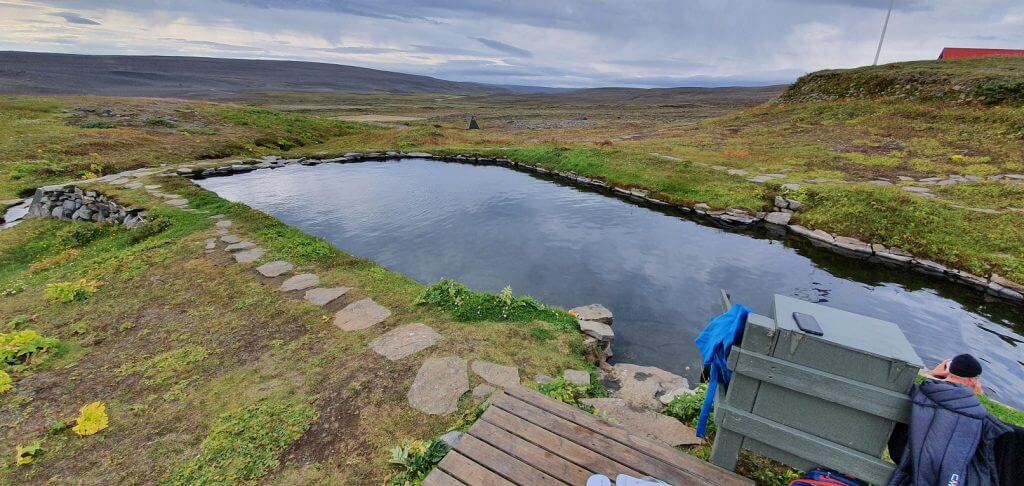
Laugafell hot spring
Laugafell hot spring is an enjoyable, spacious and pretty remote hot spring located in the central highlands of Iceland. Laugafell lies right next to the road F752 – Skagafjarðarleið and is a part of the Laugafell mountain hut and campsite area.
Laugafell hot spring type
Laugafell hot spring is a man-made and man-maintained hot spring lake. The temperature in summer was pleasantly hot with about 38°C (100°F). There’s a huge changing room with toilets, as a part of the Laugafell campsite area. There’s also a wooden path leading to the hot spring, so Laugafell definitely belongs to one of the really well-maintained hot springs.
How to get to Laugafell
Laugafell hot spring is located in the central Icelandic highlands, so you definitely need at least a small 4×4 car to reach it. Then, it depends on what season and what road you choose, whether small 4×4 is enough or whether you would need a large 4×4.
Option 1 is to arrive from the north, first via F821 – Eyjafjarðarleið and then via F752 – Skagafjarðarleið. This is the easiest way to reach Laugafell. F821 is a beautiful road without any considerable river crossings, only some small streams. Some parts of F821 are pretty steep and bumpy, though, especially the final parts in the direction of highlands. F752 up to Laugafell doesn’t contain any major river crossings, I remember only smaller streams. If you go in summer and the roads are officially open, you should do fine also with smaller 4×4 cars like Jimney or Duster.
Not sure what type of car to choose? Feel free to read how to choose a proper car or how to pick the best Icelandic car rental insurance. We also collaborate with Icelandic car rental companies to give you a discount and us a small commission at no extra cost to you.
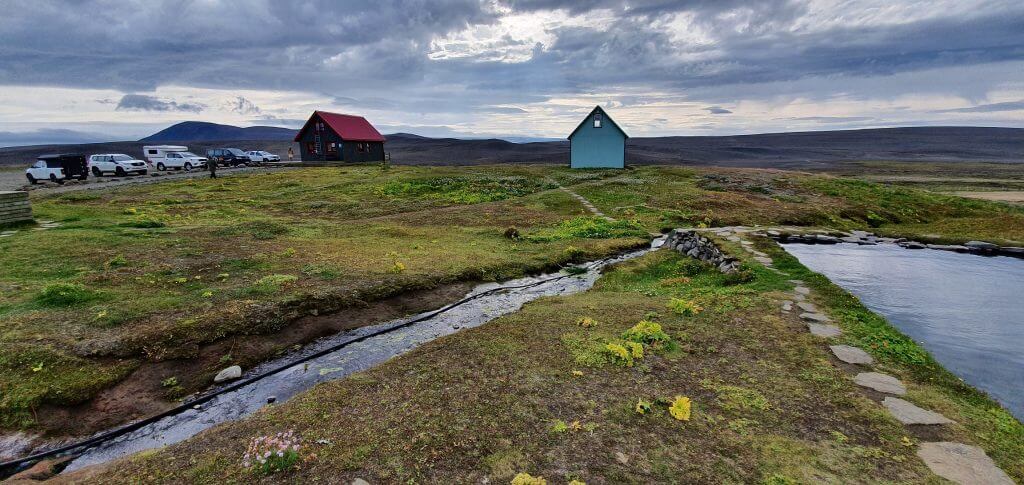
Laugafell campsite and hot spring near the sunset
Option 2 is to arrive from the south, firstly via F26 – Sprengisandur, a.k.a. Sprengisandsleið and then via the aforementioned F752 – Skagafjarðarleið. Both these roads, if you come from the south, contain medium to big-sized rivers to be crossed. We definitely recommend at least a large 4×4 SUV, and ideally a super jeep to drive the roads safely. Under extremely good conditions it’s possible to drive the roads also in medium 4×4 cars, but I would not rely on that!
Option 3 then involves driving also the F881 – Dragaleið. To our knowledge, there’s no river crossing on F881. Then, it depends whether you connect to F881 from the northern F26 or southern F26. Southern F26, as described above, contains one medium to big-sized river called Hagakvislar, next to Nyidalur, that needs to be crossed. You need a large 4×4 for that and at least some river crossing experience.
Video of Laugafell
TBA soon.
Tips for Laugafell
Price for bathing was 500ISK per person at the time of our last visit. You have to pay for bathing to the warden located in one of the huts. The hot spring is huge enough to accommodate for 20+ people so do not worry about it being crowded.
Laugarfell

Laugarfell hot spring
A nice remote hot spring in the middle of nowhere, yet still easily accessible by any car in full summer, with a hotel next to it.
Laugarfell hot spring type
The hot spring is private and it’s a part of a Laugarfell hotel. If you want to use only the hot spring, price is 1500ISK (10Eur) per person. There are actually two hot pools – one with a water temperature of around 38°C and the other one with around 43°C, which is already VERY hot and not many people are able to stay there 🙂
How to get to Laugarfell
Laugarfell is easily accessible by any car via a fully paved road 910. Read about how we chose our car. Or just get free discounts for your Icelandic car rental.
Video of Laugarfell
Tips for Laugarfell
There are also several beautiful hikes available around the area, so there’s definitely stuff to do for an entire day, if not longer. Some beautiful waterfalls also lie nearby, such as Kirkjufoss, Stuðlafoss and Faxi waterfall.
Laugarvatn Fontana

Laugarvatn fontana hot spa. Image courtesy to: www.fontana.is
Laugavallalaug
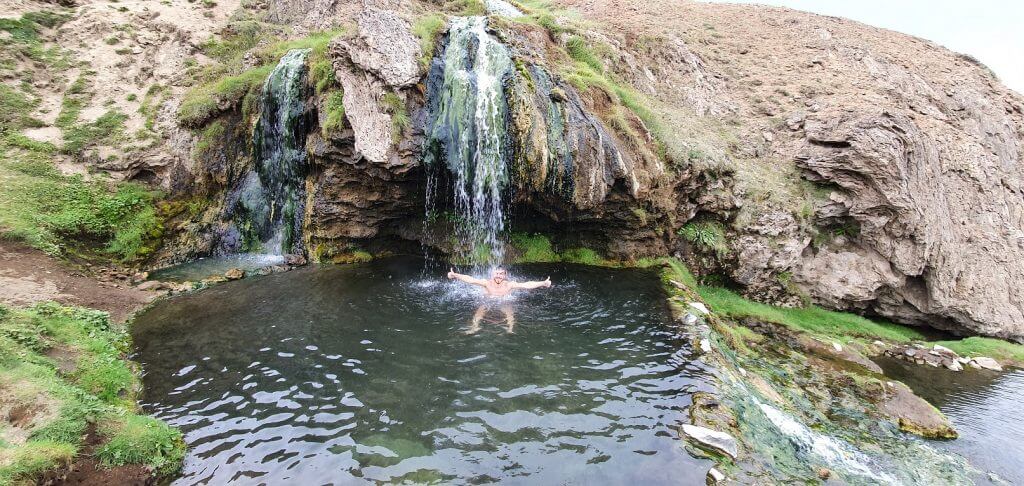
Laugavallalaug hot waterfall spring
Laugavallalaug hot spring really positively surprised us and it definitely belongs to one of our favorite Icelandic hot springs, probably even to the Top 3 🙂 Maybe you’ve been to hot springs already, but have you ever been to a hot spring waterfall? Well, that’s exactly what Laugavallalaug is!
Laugavallalaug hot spring type
Yes, Laugavallalaug is a hot spring with your private hot waterfall! This can happen only in Iceland, right? Water in Laugavallalaug is pleasantly hot (my professional assessment would say around °37C to °39C). Water is also pretty clean, at least compared to other wild hot springs (several levels cleaner compared to e.g. Seljavallalaug).
How to get to Laugavallalaug
There are several options how to reach Laugavallalaug:
- If you want to avoid F-roads as much as possible, you can come from the Hallormsstaður direction – via road 910. Road 910 is very well maintained and fully paved road. It’s probably one of the best 3-digit roads I’ve driven in Iceland. 910 ends at Kárahnjúkar dam and then you have to drive a bumpy F910 for a few kilometers. No river crossing, though.
- If you want to see the Stuðlagil canyon along the way (which we highly recommend), then come via road 923 (semi-paved, easy-to-drive road). Google labels 923 as just “Jökuldalsvegur”. The correct names are here https://vegasja.vegagerdin.is/eng/. Afterwards, you will have to drive F910 in the southern direction (Google again has a wrong name – “Karahnjukar”). This part of F910 is very bumpy, but contains no river crossings (maybe some small streams that I don’t even remember).
- If you want to see Askja area first (as we did), the longest and the most difficult access road to Laugavallalaug leads also via long part of F910 coming from the crossroads with F88. The road is definitely doable in a medium-sized 4×4 in good weather and road conditions. There are one (or two) medium-sized river crossings.
Access to Laugavallalaug is thus is a bit cumbersome, but manageable. The last part of F910 close to Laugavallalaug is really bumpy, but doesn’t contain any river crossings. Still, it’s advantageous to have a good ground clearance of car for it. Coming from the north-east, you then have to turn right and drive the dirt track to Laugavallalaug for approximately 1.5km to arrive at the small car park.
Several visitors left their car just before the turn. The reason is, after taking this detour, the road turns into a steep, narrow and bumpy track, making it not that pleasant a drive. Nevertheless, we’ve seen even cars much smaller than ours (like Dacia Duster) making it to the car park as well, so it’s definitely doable. Just a lifespan of your car’s bumpers would probably be a bit shortened after this drive 🙂
Read about how we chose our car. Or just get free discounts for your Icelandic car rental.
Video of Laugavallalaug
Tips for Laugavallalaug
Laugavallalaug is also surrounded by picturesque, green hills and a few pretty hungry sheep. The place is quite hard to access, so we expected almost no visitors. We were surprised to arrive at the car park and park our car along 5 other cars. Nevertheless, these car owners were probably only chilling in their cars, because we met only one couple in the hot spring.
What we liked the most about Laugavallalaug was its remoteness, amazing surrounding countryside and, of course the waterfall experience! It was more than just worth the drive!
Lýsuhólslaug
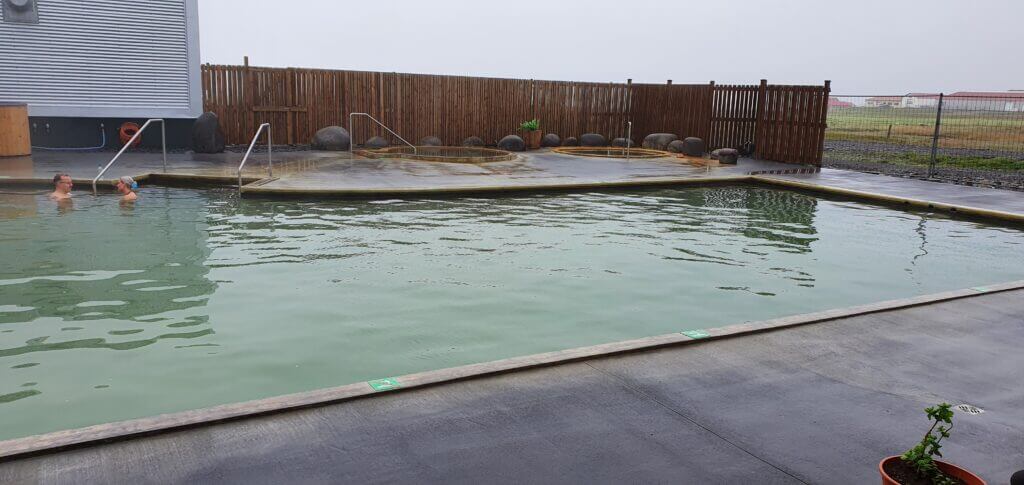
Lýsuhólslaug hot spring
Lysuholslaug or Lýsulaugar is a nice hot pool “spa”, hidden in the southern part of the Snaefellsnes peninsula.
Lýsuhólslaug hot spring type
Lysuholslaug is a man-made and man-maintained hot pool. There’s an access fee of around 8 USD. For that price, you can use the whole infrastructure around – changing rooms, showers, toilets, etc. There are 2 small hot tubes and 1 bigger pool. All of them are the so-called “sea-weed baths”. That means, they look to be dirty, because of the sea-weeds everywhere. The ground and walls of the pool are also slippery, because of sea-weeds.
The big pool has water with a temperature of around 32°C / 90°F. Water in the small hot tubes is much hotter, around 36-38°C / 97-100°F in the first of them and around 39-41°C / 102-106°F in the hottest one. It’s definitely not recommended to stay in the hottest one for too long.
How to get to Lýsuhólslaug
Lysuholslaug is easily accessible by any 2wd car. Read about how we chose our car. Or just get free discounts for your Icelandic car rental. The distance from the nearest car park to the hot spring is around 1 minute of walking.
Tips about Lýsuhólslaug
Bathing in Lysuholslaug is definitely a very pleasant activity when the weather sucks. We really enjoyed it, despite the place not being anywhere near as picturesque as Hrunalaug or some other “wilder” hot springs. So, it depends on your preference, weather (and who knows what else), whether it’s worth making a detour for you. For us it definitely was.
Marteinslaug

Marteinslaug hot spring. Image courtesy to: http://losangelesswimmin.com/
Mývatn nature baths

Mývatn nature baths. Image courtesy to: www.myvatnnaturebaths.is
Nauteyrarlaug

Nauteyrarlaug hot spring. Image courtesy to: www.love-iceland.at
Nauthólsvík beach lagoon

Nauthólsvík beach lagoon
Pollurinn hot pool

Pollurinn hot pool. Image courtesy to: www.icelandthebeautiful.com
Reykjadalur hot river

Reykjadalur hot spring river. Image courtesy to: www.icelandthebeautiful.com
Reykjafjarðarlaug

Reykjafjarðarlaug hot pool
Reykjafjardarlaug is a nice hot spring in the middle of nowhere, right next to the Road 63 in Westfjords.
Reykjafjardarlaug hot spring type
Reykjafjarðarlaug hot spring is man-made and man-maintained. It also has a changing room. Bathing is free of charge, we didn’t notice any donation box, but one may have been added in the meantime. The water was around 35°C / 95°F at the time of our visit, i.e. not that hot but still pleasant.
How to get to Reykjafjardarlaug
In summer, Reykjafjardarlaug hot spring is accessible by any 2wd car. Although road 63 leading there is zig-zag and secluded, it should be alright to reach with a bit of careful driving. Read about how we chose our car. Or just get free discounts for your Icelandic car rental. The distance from the nearest car park to the hot spring is around 5 minutes of walking.
Video of Reykjafjarðarlaug hot spring
Tips about Reykjafjarðarlaug
There are actually 2 places for bathing in here. The first one is the man-made artificial pool with regulated water temperature. The second one is the actual source of the hot water itself – a wild hot spring with varying temperatures (usually much hotter). This secret Reykjafjardarlaug hot spring lies nearby.
We made just a quick stop at the hot spring because we had already visited several of them at that time and headed elsewhere on that day. Reykjafjardarlaug is nevertheless nice and pleasant, just maybe not that exceptional compared to some other ones in Iceland. As someone had put it: “3 out of 5 Icelandic stars, i.e. 5 out of 5 anywhere else in the world”.
Reykjanes geothermal pool

Reykjanes geothermal pool. Image courtesy to: http://reykjaneswestfjords.is/
Sæberg hot tubs

Sæberg hot tubes. Image courtesy to: www.icelandthebeautiful.com
Secret Lagoon

Secret lagoon. Image courtesy to: www.secretlagoon.is/
15% discount code for Secret Lagoon entrance: EPIC
Seljavallalaug

Seljavallalaug hot spring
Just a short hike from the ring road lies a popular, yet not very neat, hot pool, a.k.a. Seljavallalaug. You need to take around 30-minutes long hike to get there.
Seljavallalaug hot spring type
The pool is big, full of algae, slippery, and with water of a temperature of around 30°C+, which is not that much compared to several other 40°C+ Icelandic hot springs. It’s an old pool, not much maintained.
How to get to Seljavallalaug
Seljavallalaug is located on private land and to get there you need to walk. You can park your car also on the private land – there are 2 not very big car parks, which, however, weren’t completely full at the time of our visit. We parked the car at the one closer to the pool (but it really doesn’t make any difference, because they are both next to each other). Luckily for visitors, the landowners have not yet started to get money for the parking and visit of the pool. This may change in the future, though.
Read about how we chose our car. Or just get free discounts for your Icelandic car rental.
After parking your car it’s a 30 minutes (one way), non-demanding walk around a nice area. It’s not marked, but it also isn’t hard to follow because a) there’s no other route, b) you will probably meet several fellow tourists on the way there.
Tips about Seljavallalaug
There’s an old changing room at Seljavallalaug (actually 2 rooms, maybe supposed to be for men and women, but people mixed it anyway). As I said above – the pool is big, full of algae, slippery, and with water of a temperature of around 30°C+, which is not that much compared to several other 40°C+ Icelandic hot springs. Nevertheless, many other visitors seemed to enjoy the pool very much anyway. To sum it up, Seljavallalaug was still a nice experience, although we prefer other Icelandic hot springs and pools much more.
UPDATE from the local: “Seljavallalaug was cold when I visited in August 2022, no hot water coming out of the rock face into the pool anymore. Possibly the added tourism catering by the landowner has redirected the water for all those cabins.” Thank you Hákon Halldórsson for this info from 15.10.2022.
Video of Seljavallalaug
Skátalaug

Skátalaug hot spring. Image courtesy to: www.icelandthebeautiful.com
Skátalaug advice from the local
“Skátalaug by Kleifarvatn is empty now, water is flowing another route, away from it. No sign of this being a result of intervention.” Thank you Hákon Halldórsson for this info from 15.10.2022.
Sky Lagoon

Sky lagoon. Image courtesy to: www.skylagoon.com/
Sky Lagoon is a luxurious, modern hot lagoon in Reykjavik, famous due to its sea views and its “7-step ritual”.
We’ve collected the cheapest yet reliable tickets & transfers for Sky Lagoon below:
- Sky Lagoon Ticket only – you can choose between a Saman Pass (cheaper) or Sér Pass (more expensive)
- Sky Lagoon Ticket + Reykjavik Bus – you can choose between a Saman Pass or Sér Pass + pickup/dropoff place in Reykjavik
- Sky Lagoon Airport Taxi (click on the first option) – private transfer from and to Keflavik Airport
All options above have free cancellation/rescheduling up to 24 hours before departure.
Snorralaug
It’s forbidden to bath in Snorralaug. Photos only.
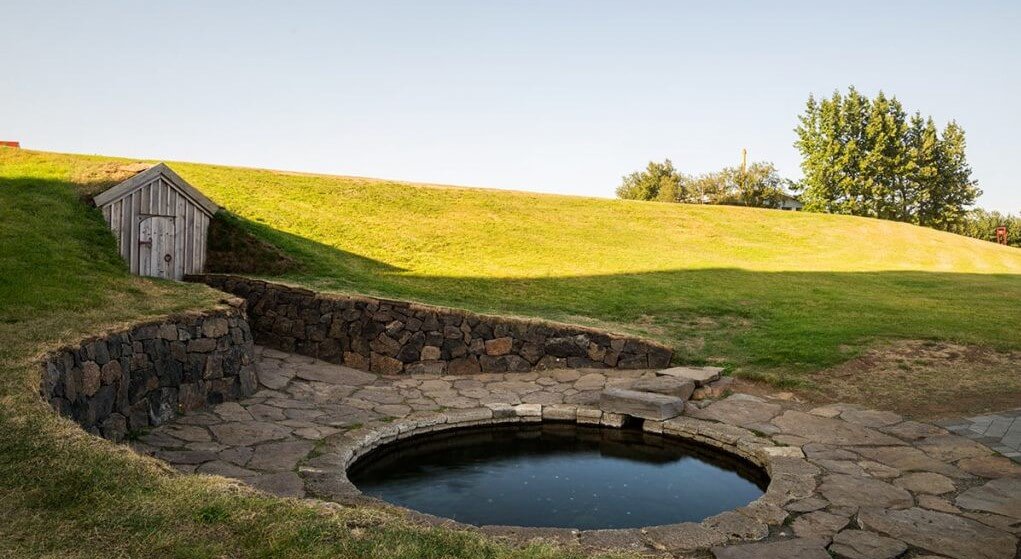
Snorralaug hot spring. Image courtesy to: www.icelandthebeautiful.com
Strútslaug

Strútslaug hot spring
Strútslaug is one of the most remote hot springs in entire Iceland. It’s located deep in the highlands, close to Maelifell volcano and Laugavegur trail. You have to firstly drive there pretty long and then hike for 1,5 hour one way, at best.
Strútslaug hot spring type
Strutslaug is a pretty big, totally wild natural hot spring that could easily welcome tens of visitors. I guess it’s never really full, given its total remoteness. It’s also pleasantly hot, with a water temperature of around 40°C according to my (non) professional estimate. It’s a very surreal and pleasant bathing experience in the middle of the total nowhere. One of my favorite Icelandic hot springs.
How to get to Strútslaug
Getting to Strútslaug is quite a challenge and you better use a super jeep for that or a guided tour. Under a good weather and road conditions, it’s possible to drive to the start of the hiking trail also by a large 4×4 SUV, like Land Cruiser. But as I mentioned, I better recommend a true jeep.
Strútslaug is located a 1,5 hour long hike from the end of Strútur track. Remember, Strútur track is not even an F-road, it’s even rougher, it’s just a dirt track. Now to get to the Strútur track, you have to arrive there by F210 – Fjallabaksleið syðri, which is not easy to drive either, from neither direction (west, nor east). There are several usually medium, sometimes big, river crossings. Please study this route carefully before going or just don’t go. Otherwise you can seriously hurt yourself. We described the drive in our detailed article about Strútslaug and also in our List of F-roads. We, however, take no responsibility for your drive.
This was the drive, and now the hike.
The hiking trail towards Strútslaug is roughly 5 kilometers long, not difficult at all, and it took us around 1.5 hours to finish it at a normal pace. It leads through nice valleys full of moss and along river streams. To hike to Strutslaug is a nice way to experience Icelandic highlands, even for families. The hike is pretty easy, just a bit long, but it doesn’t have any steep or exposed passages. It’s basically a walk through the moss valleys. Up until the last meters we were not sure where the end of the trail actually is. The Strutslaug itself is not well visible from the distance.
Tips about Strútslaug
There’s no changing cabin at Strutslaug. Anyway, we looked very much forward to bathing in Strutslaug, because the weather was very moody, with completely clouded skies and light drizzle throughout our entire hike. We put a bag on the wet ground, changed our clothes, covered them with waterproof clothes, and ran for the hot spring.
Video of Strútslaug
Sturlungalaug
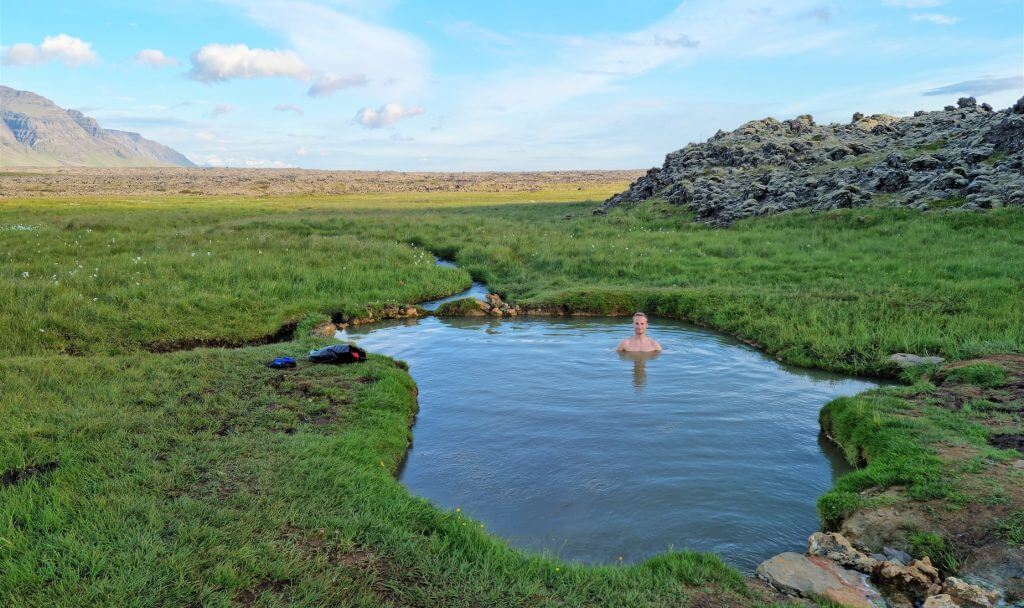
Sturlungalaug hot spring, sometimes called Guðmundarlaug
One of our favorite “hidden gems” hot springs in Iceland is definitely Sturlungalaug hot spring. Sturlungalaug, sometimes called by locals also Guðmundarlaug, is actually the only wild hot spring in Snæfellsnes peninsula. And not many visitors know about it. Don’t expect anything fancy, Sturlungalaug is basically just a big hole in the ground. But man, what a pleasant and remote hole!
Sturlungalaug hot spring type
In July, the water in Sturlungalaug was pleasantly hot, having around 38-39°C (102°F). We took a special care when entering the hotpot, because we saw bubbles in the water, indicating potentially dangerously hot water. We started by slowly trying the temperature at various spots, but the temperature was luckily stable, so we entered and enjoyed the soak. Sturlungalaug seems to be man-created but not often maintained and not much used. Hot spring water has been definitely here for hundreds of years, just someone took it above the ground.
How to get to Sturlungalaug
It’s not that easy to get to Sturlungalaug hot spring. There’s a dirt track leading to Sturlungalaug, which you will not find on majority of maps (including Google Maps). However, the track is displayed on one of the maps we use at Epic Iceland and the map is freely available to everyone else as well. The dirt track leading to Sturlungalaug is a 20-minute long bumpy drive on a not well maintained road.
Technically it may be possible to reach Sturlungalaug by a 2wd car, but we highly recommend driving the Sturlungalaug dirt track with any proper 4wd car, due to bumpiness of the road and a possibility to damage your 2wd car. Sturlungalaug track leads through the old lava field and next to small and remote Icelandic huts, which is probably the only reason why there’s any road at all.
Tips about Sturlungalaug
Once you finish the road, there’s a little parking space about a minute of walk from Sturlungalaug hot spring and you just cannot miss it. We arrived to Sturlungalaug at around 7PM in the peak season in July and had the place all for ourselves. We highly recommend taking some kind of slippers to reach Sturlungalaug, because the grass leading there is pretty wet and you can get your shoes wet easily.
Bathing totally alone in a wild hot spring after a very long day, enjoying the scenery of the nearby remote surroundings, with the sun slowly setting down was a once in a lifetime experience even for myself, after having already visited Iceland numerous times in the past. Sturlungalaug hot spring was one of the highlights of our visit of Snæfellsnes peninsula.
Vök baths

Vök Baths hot spa







